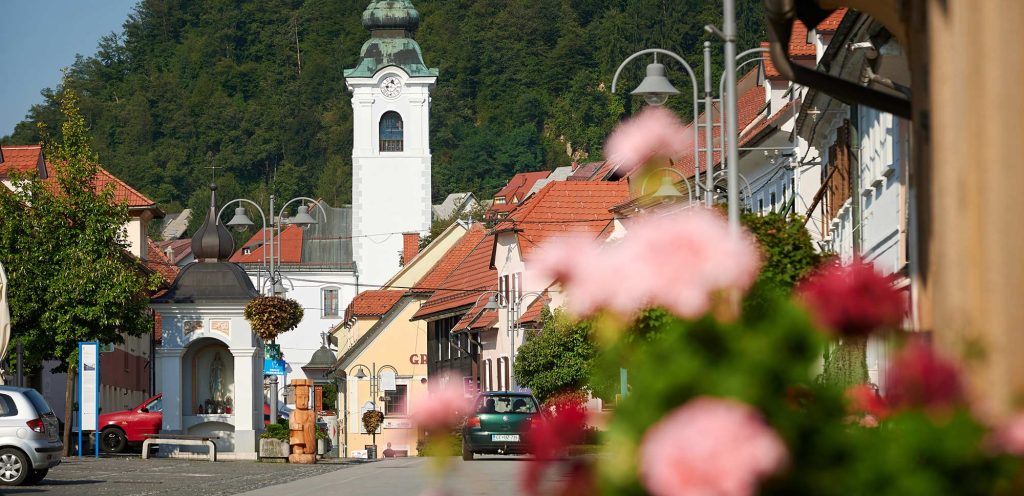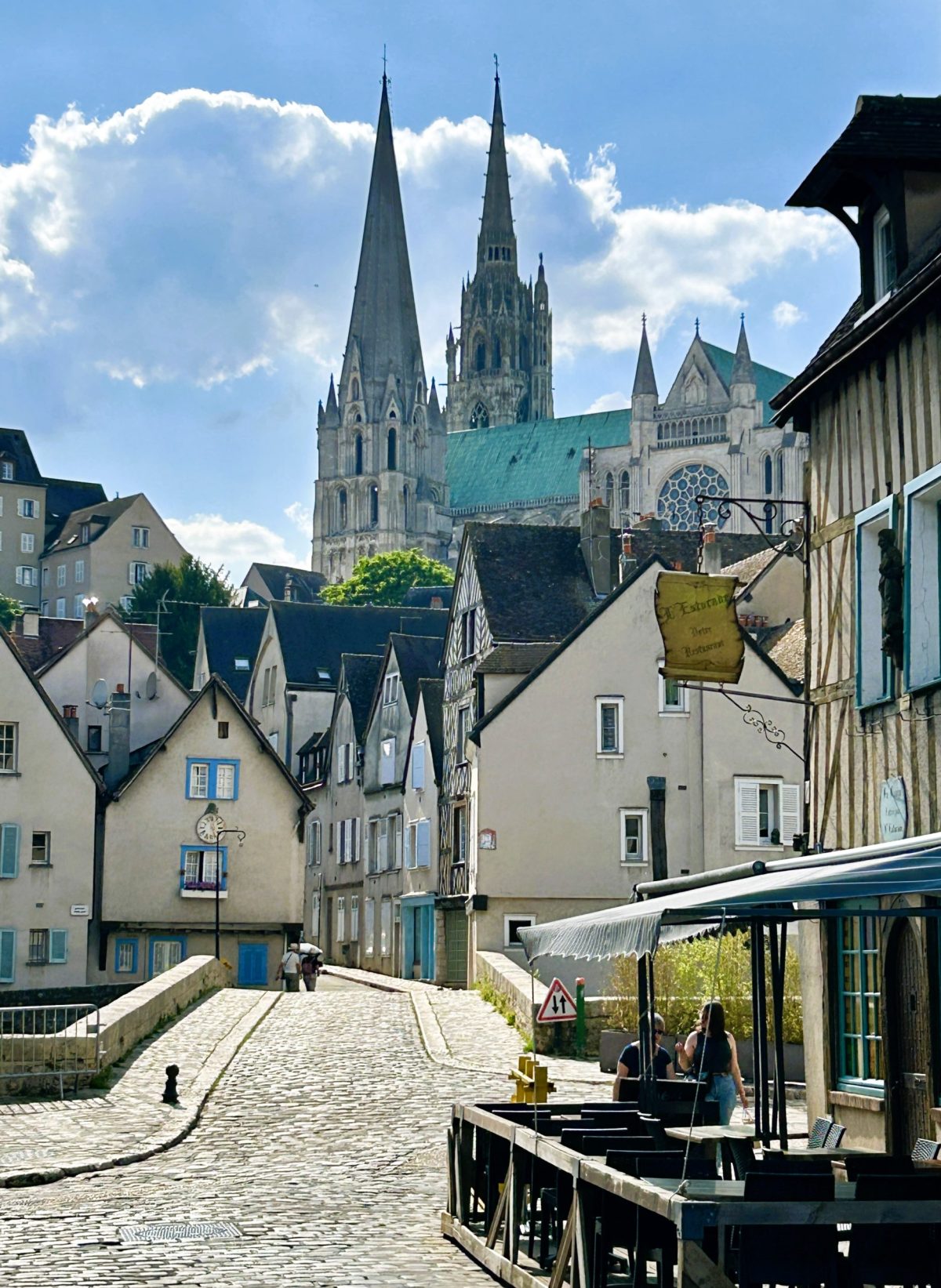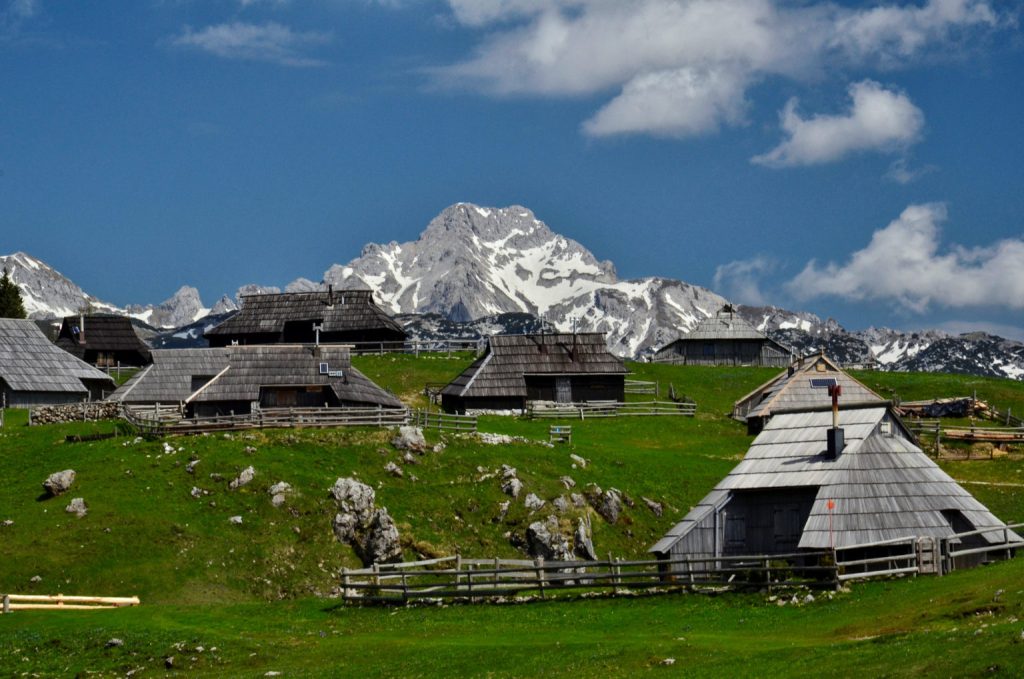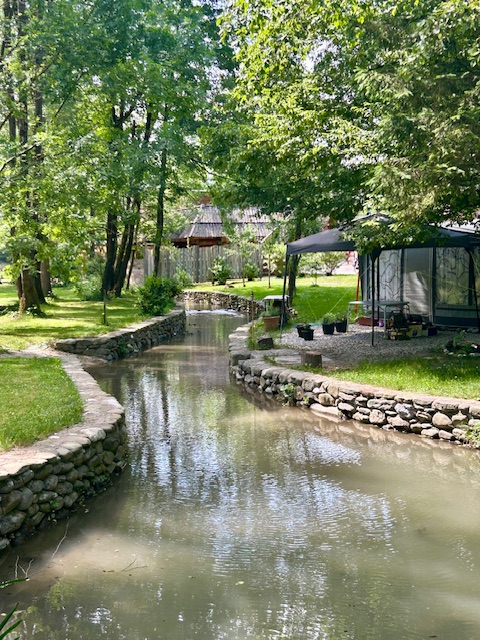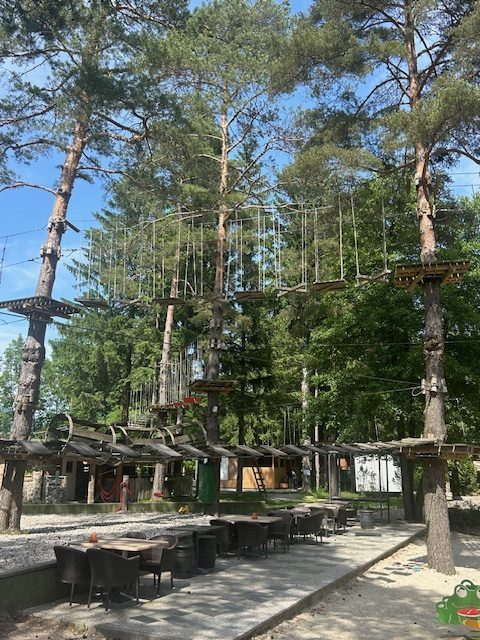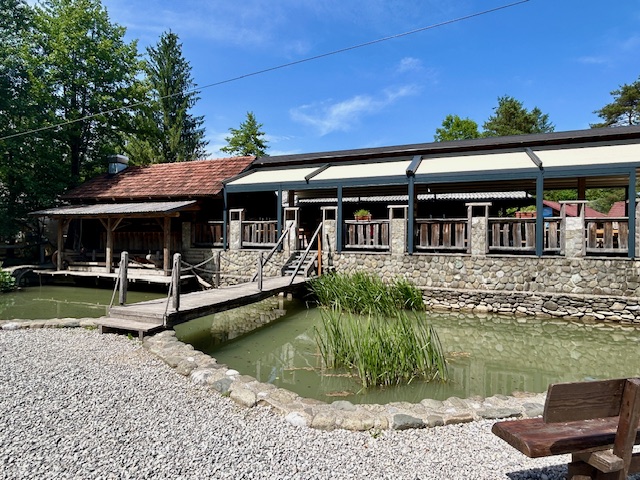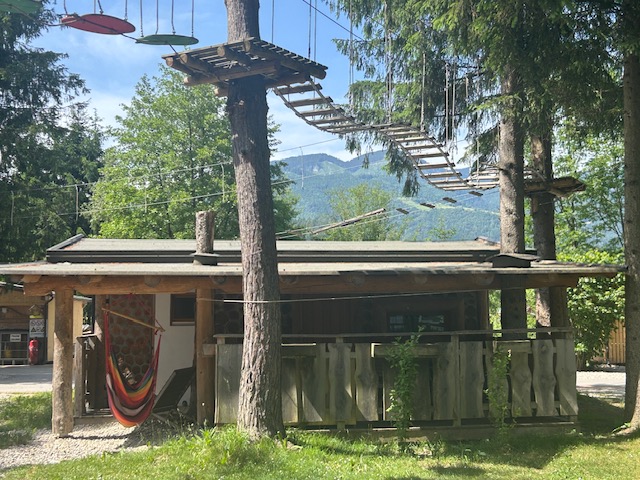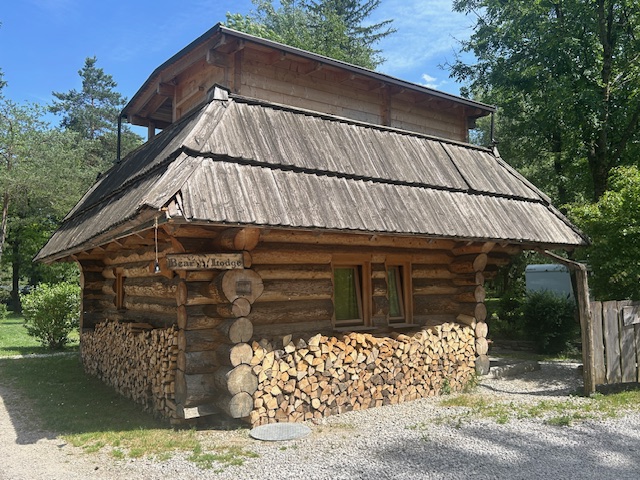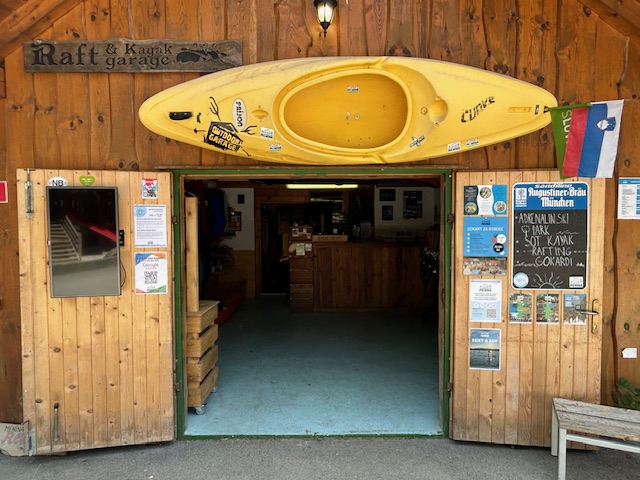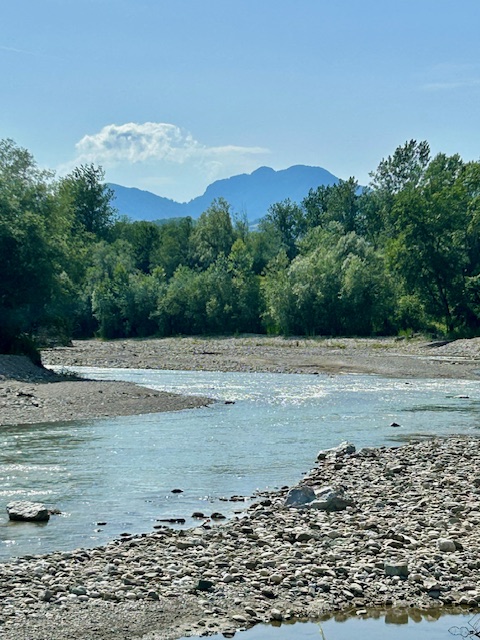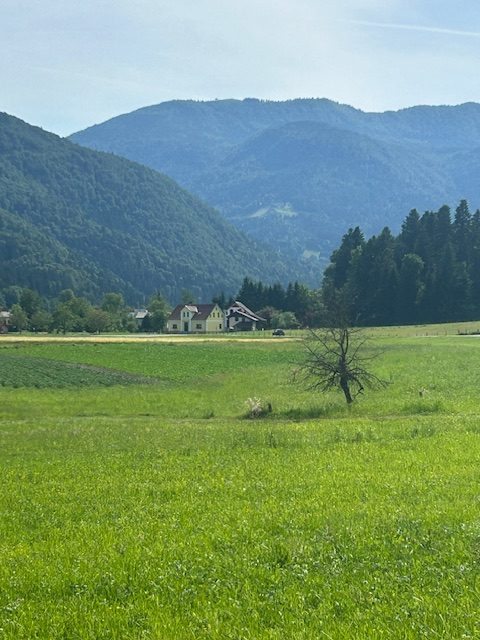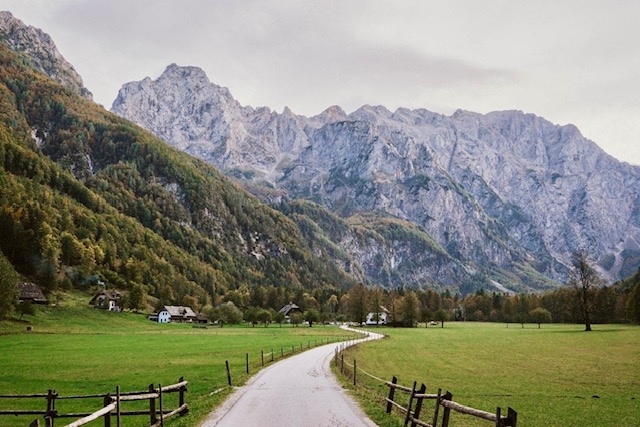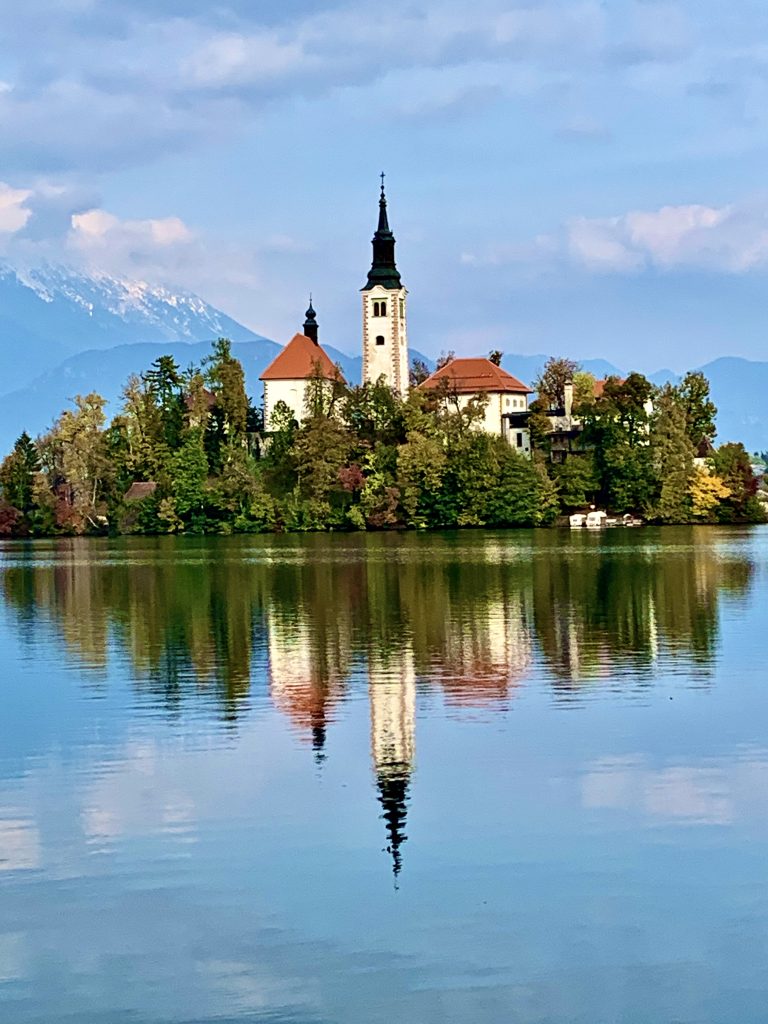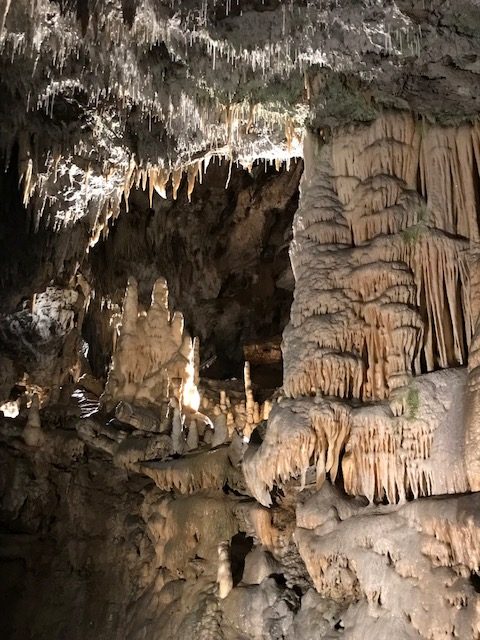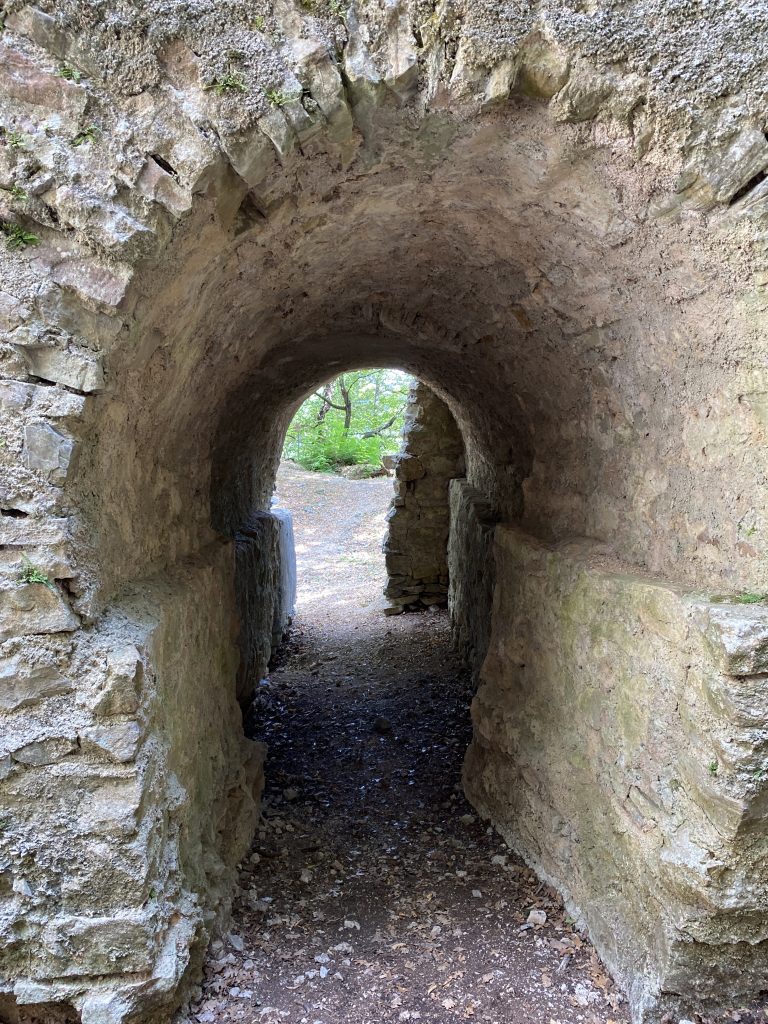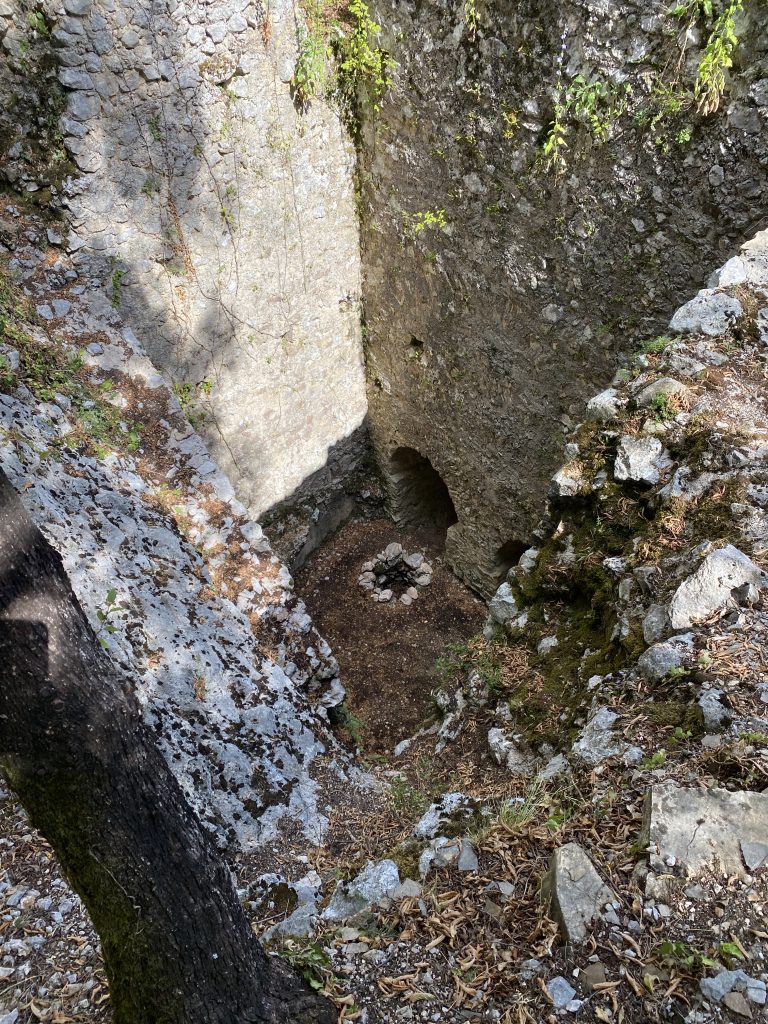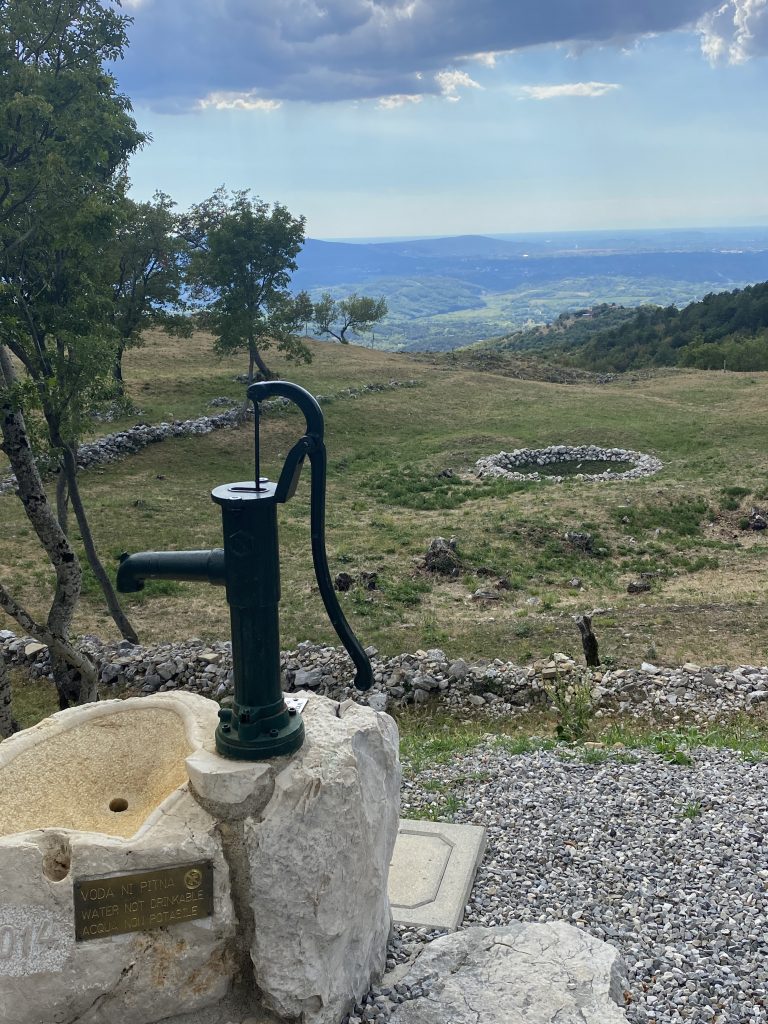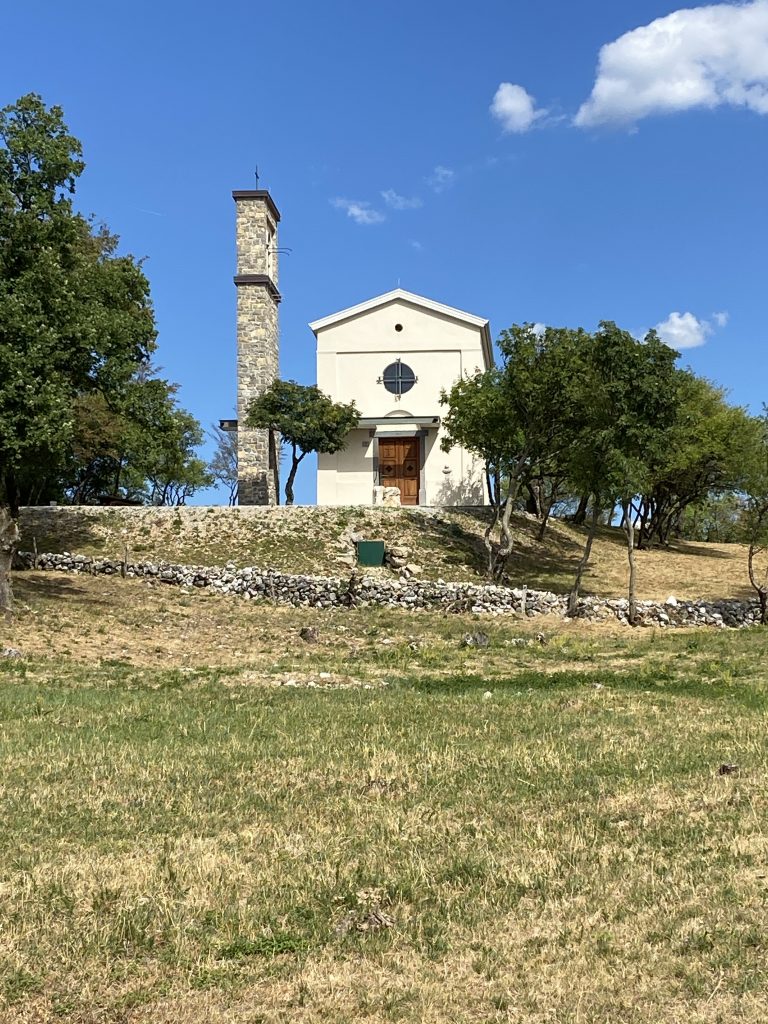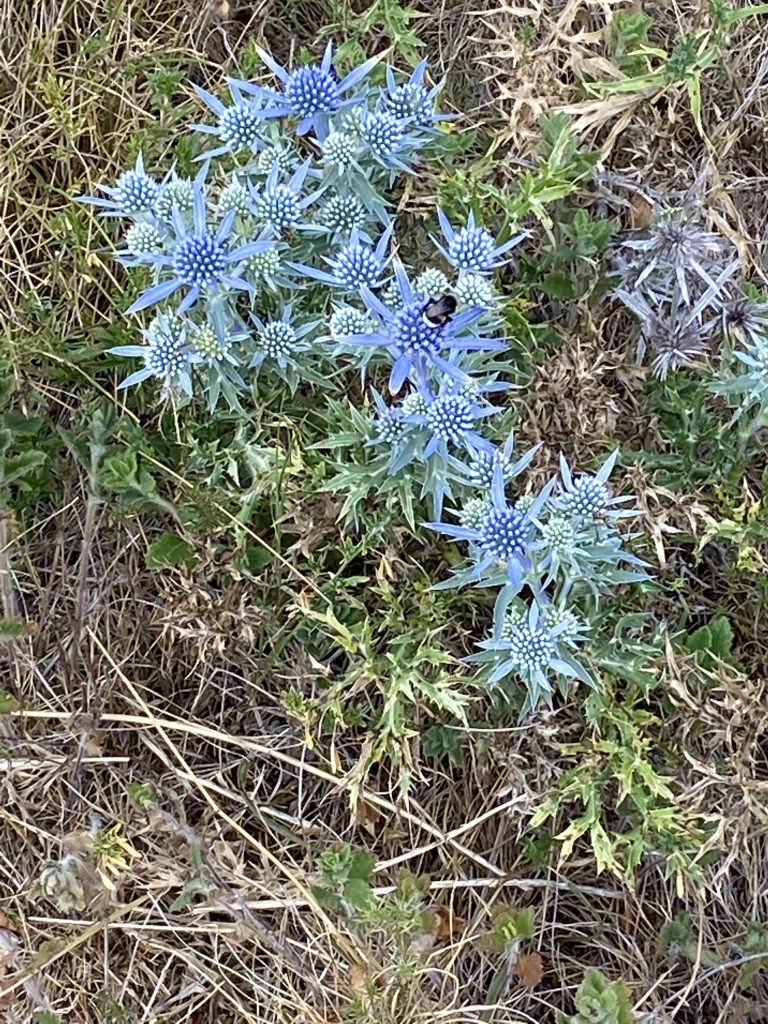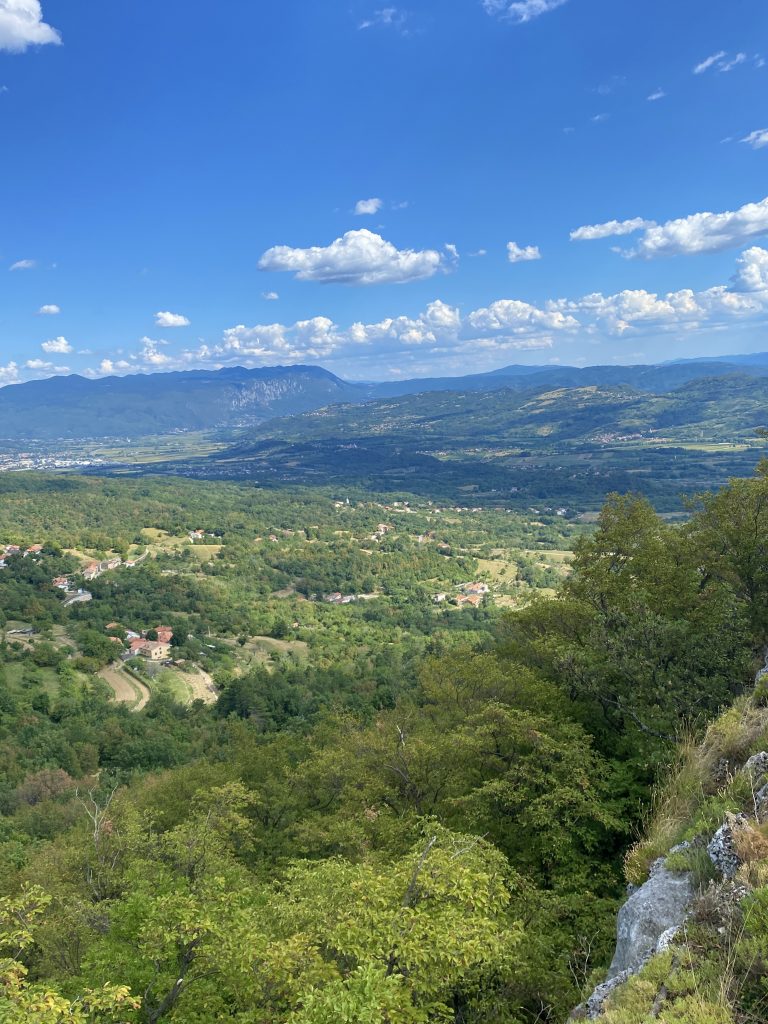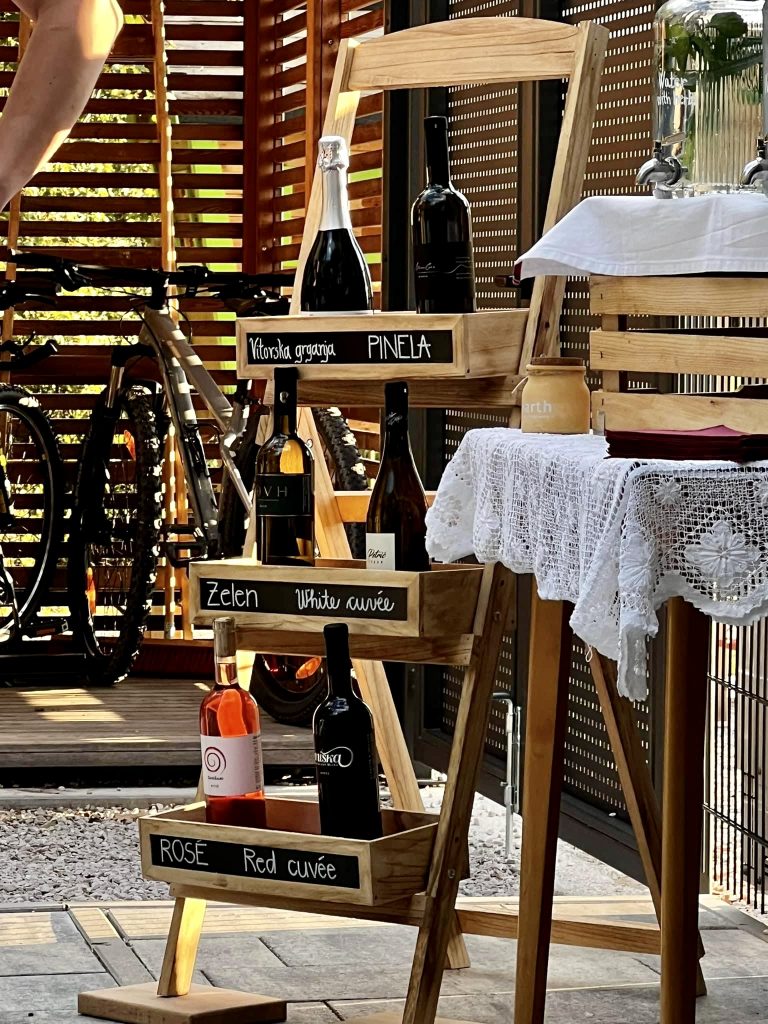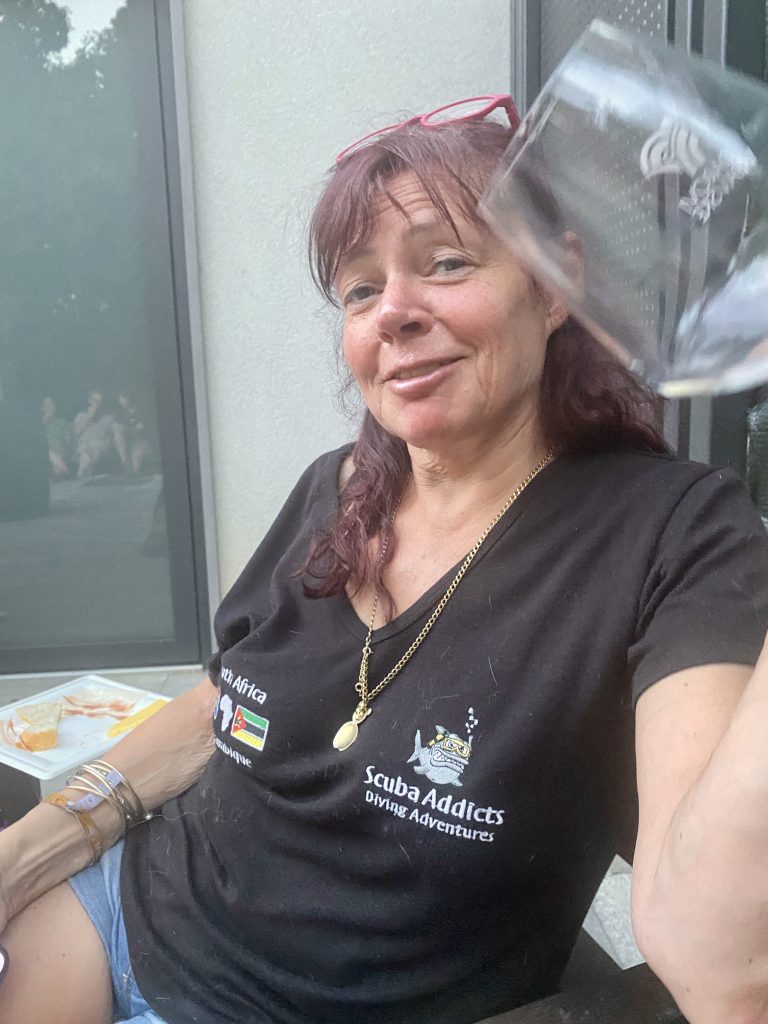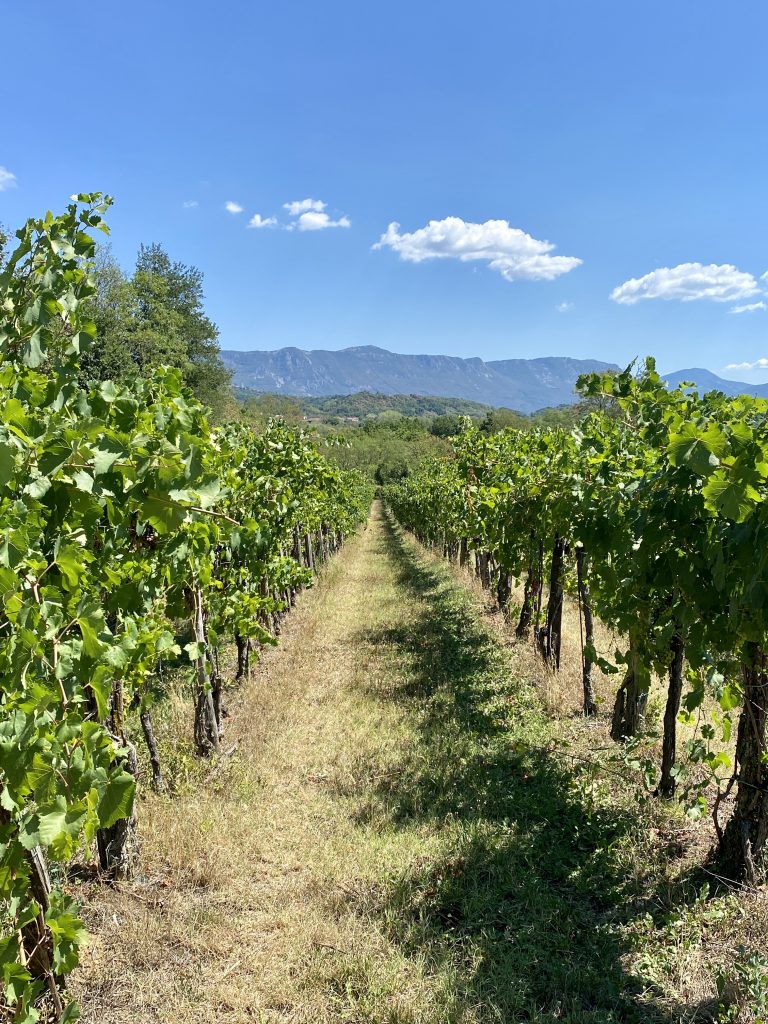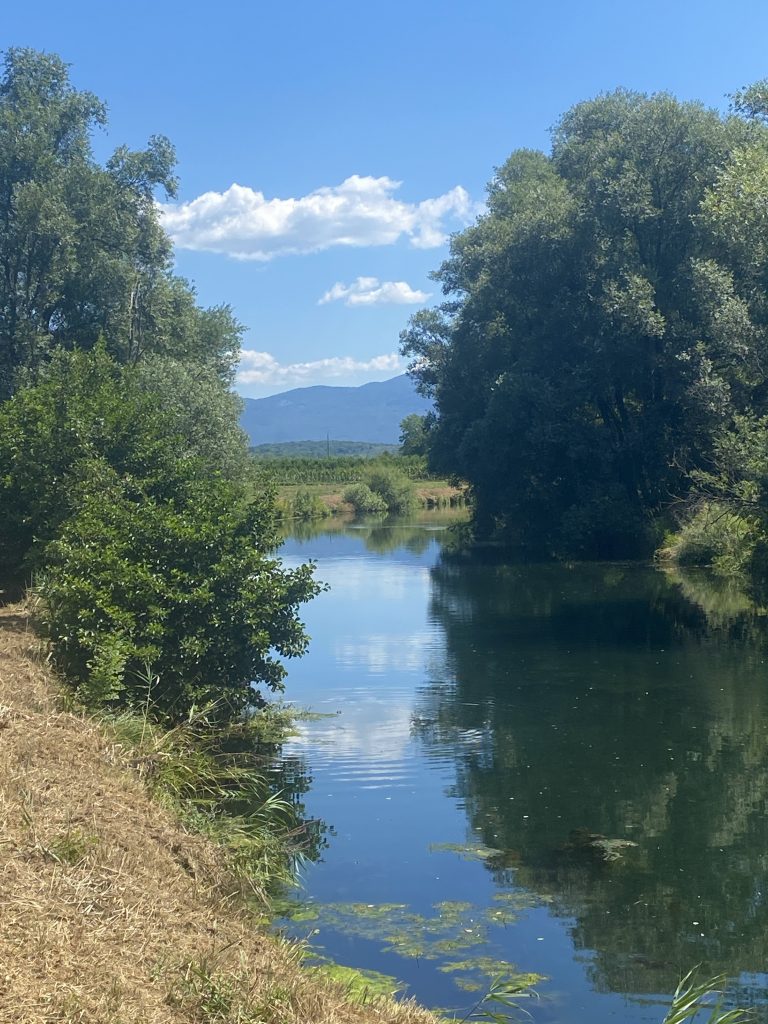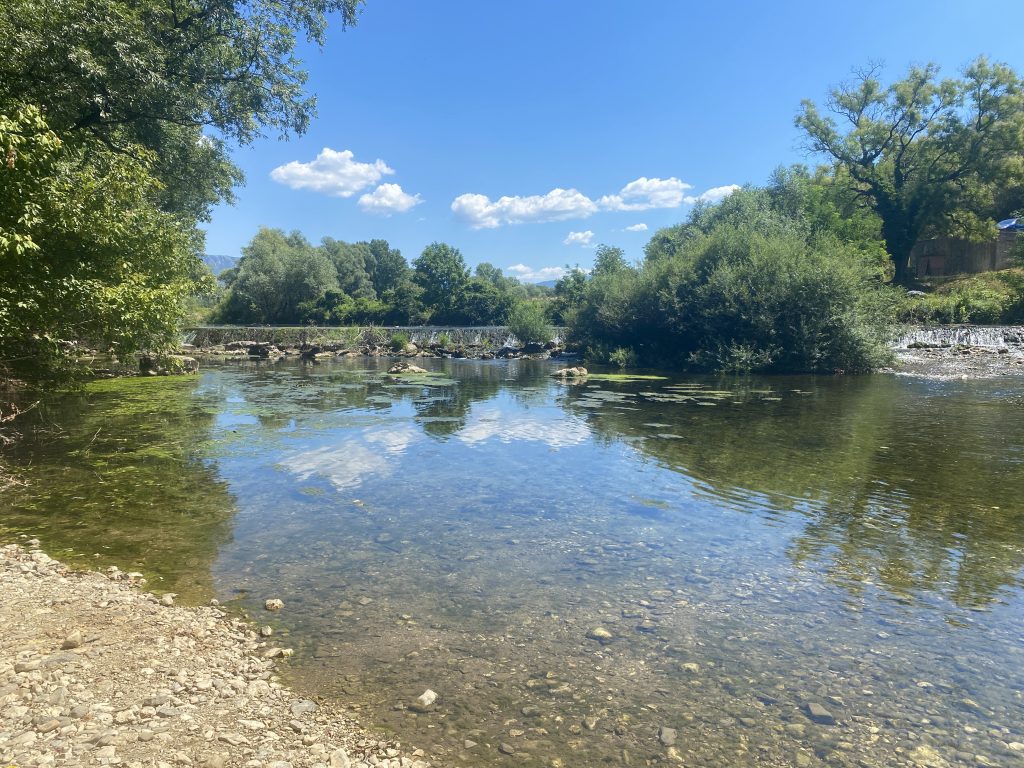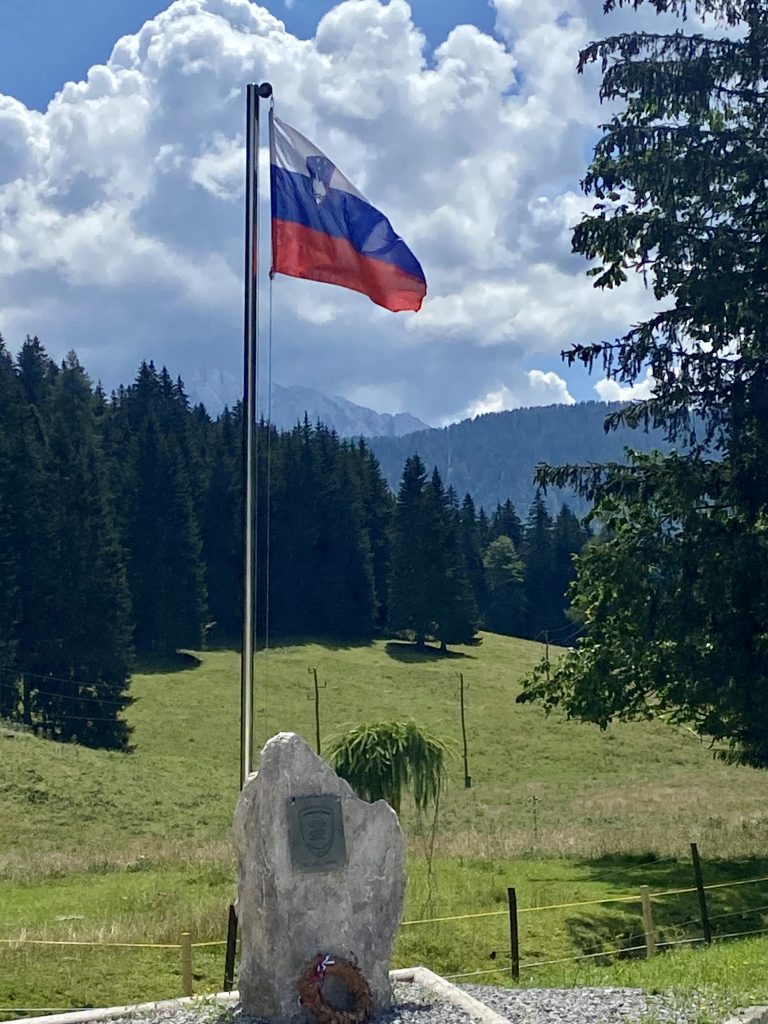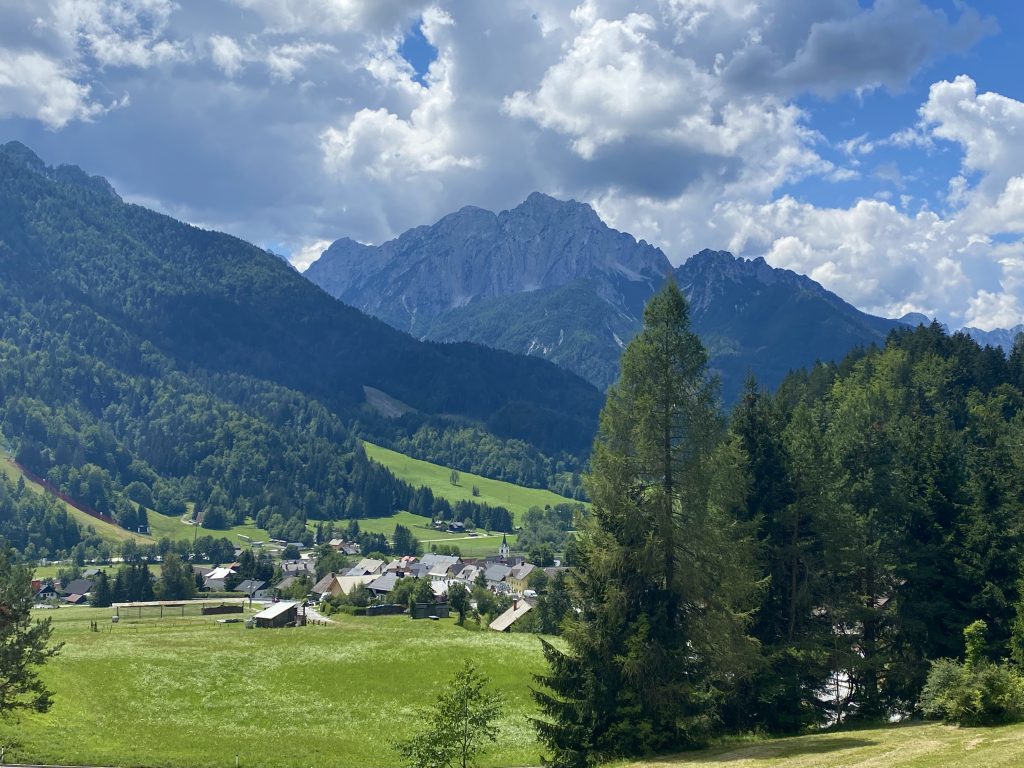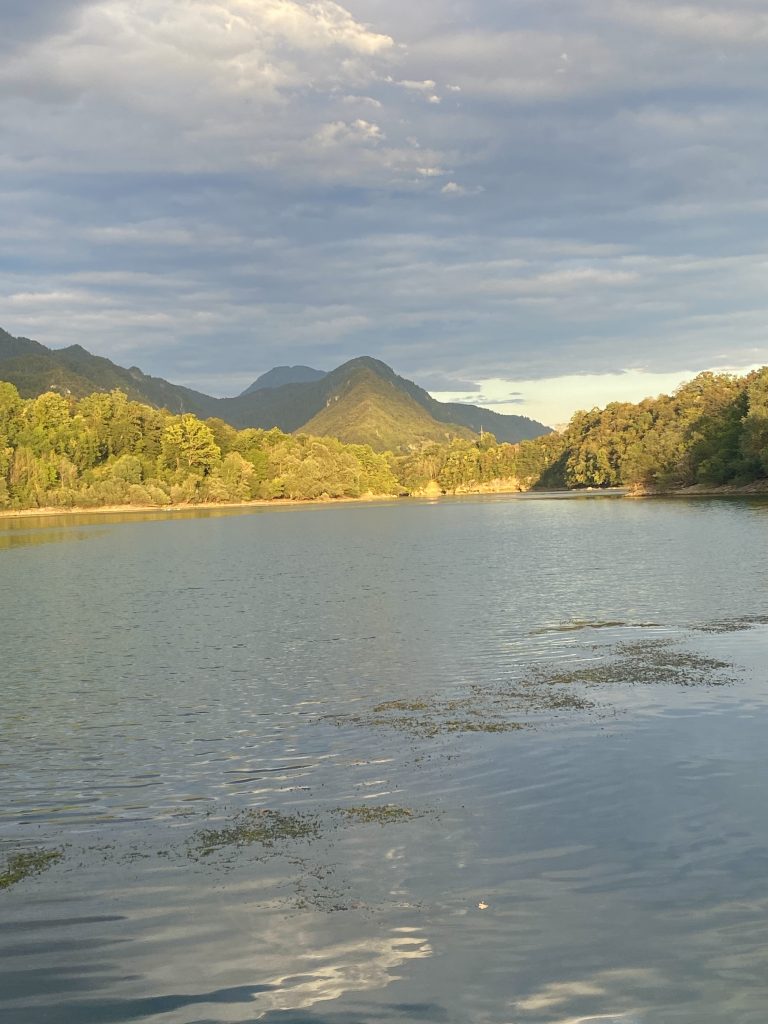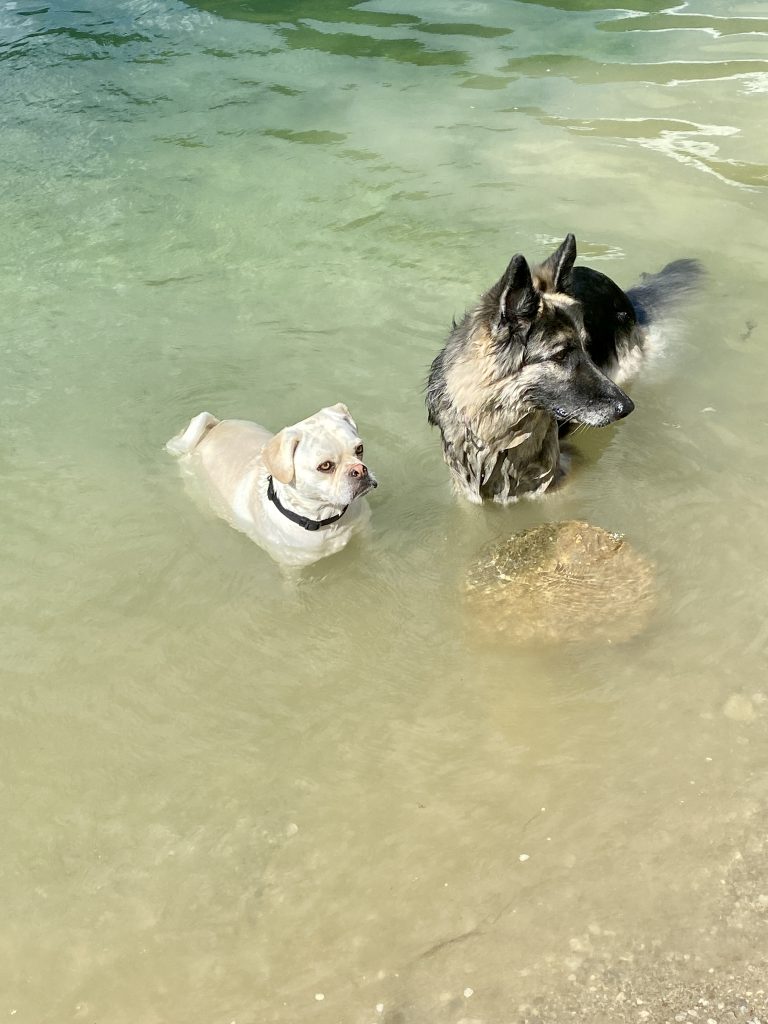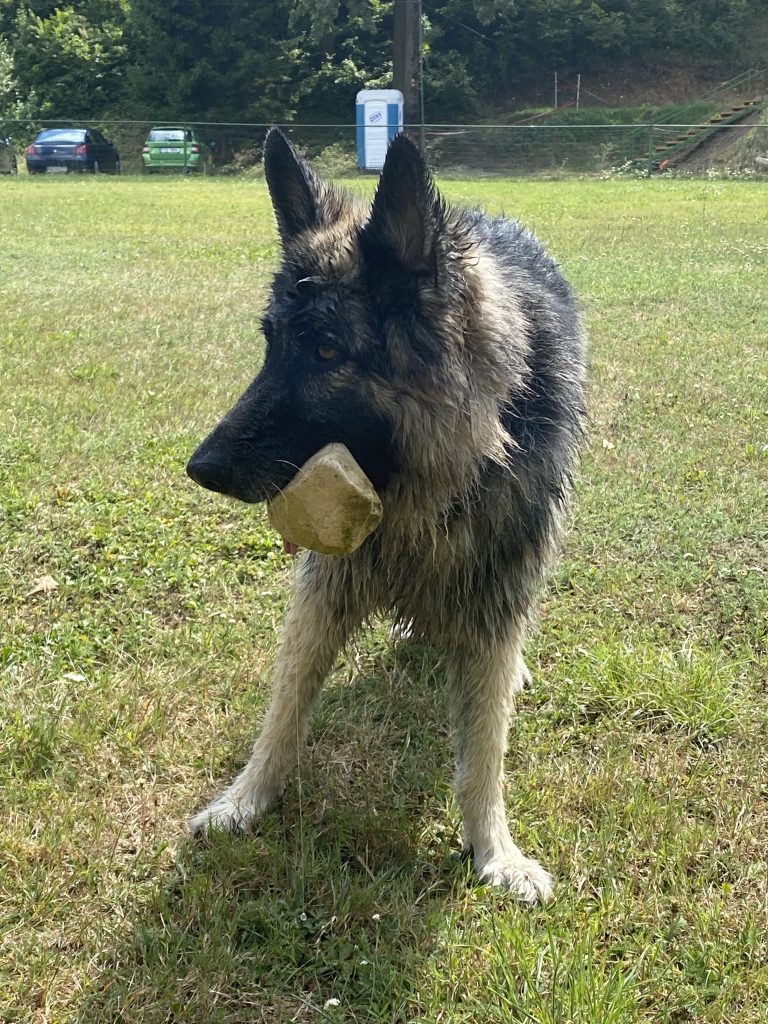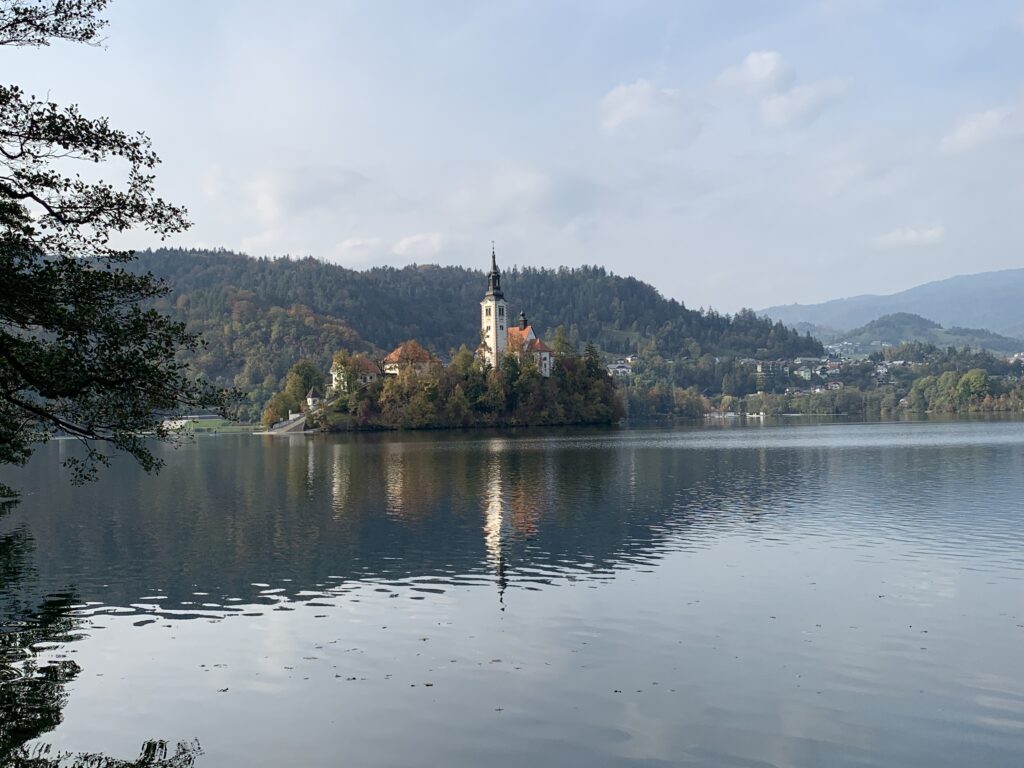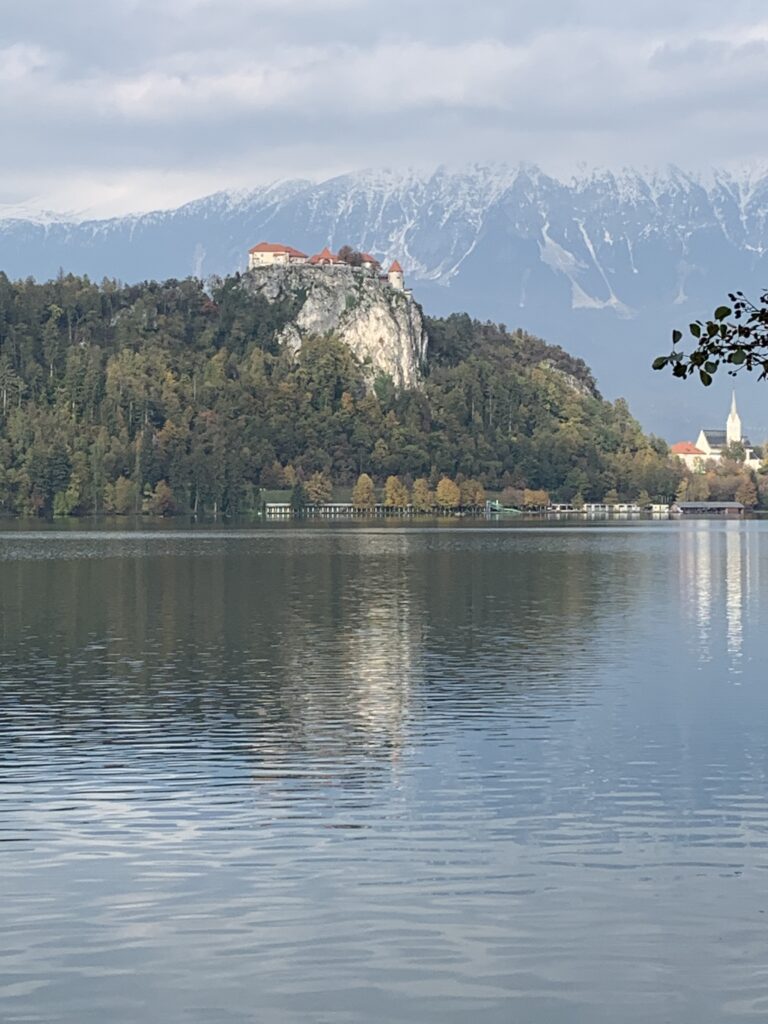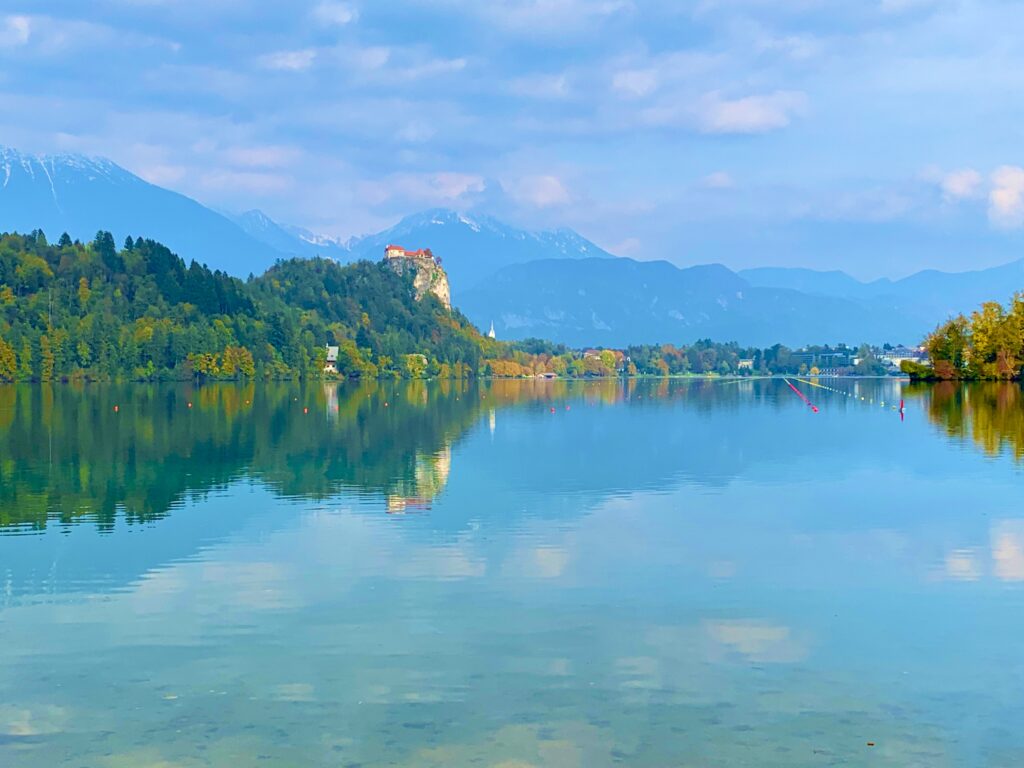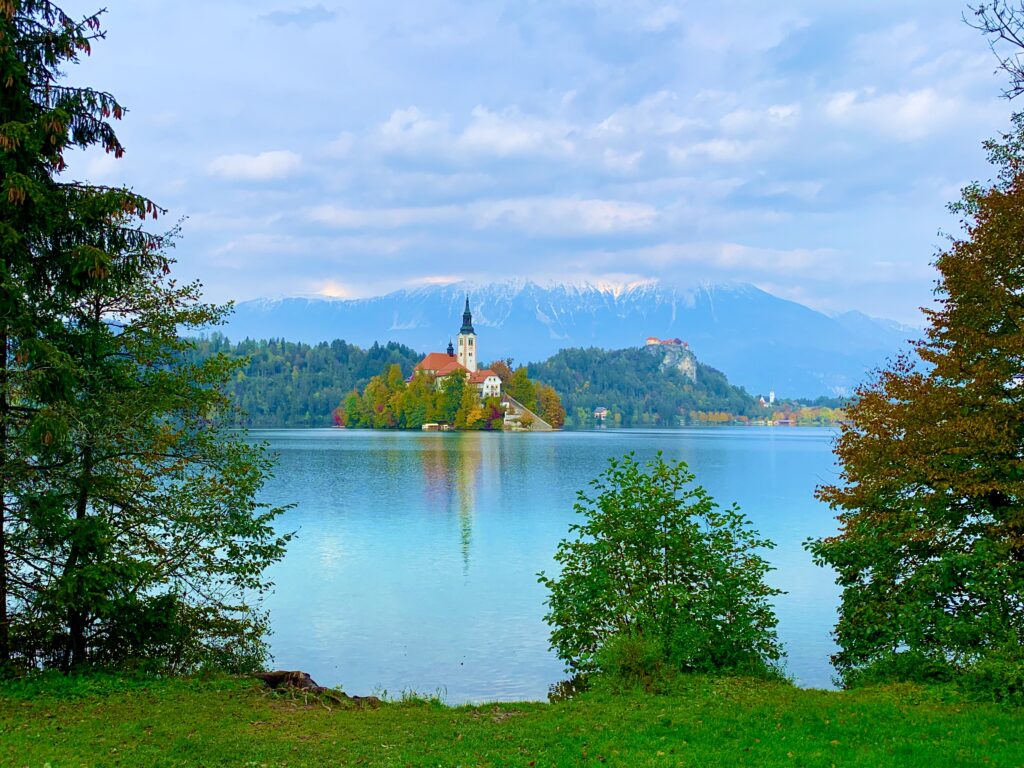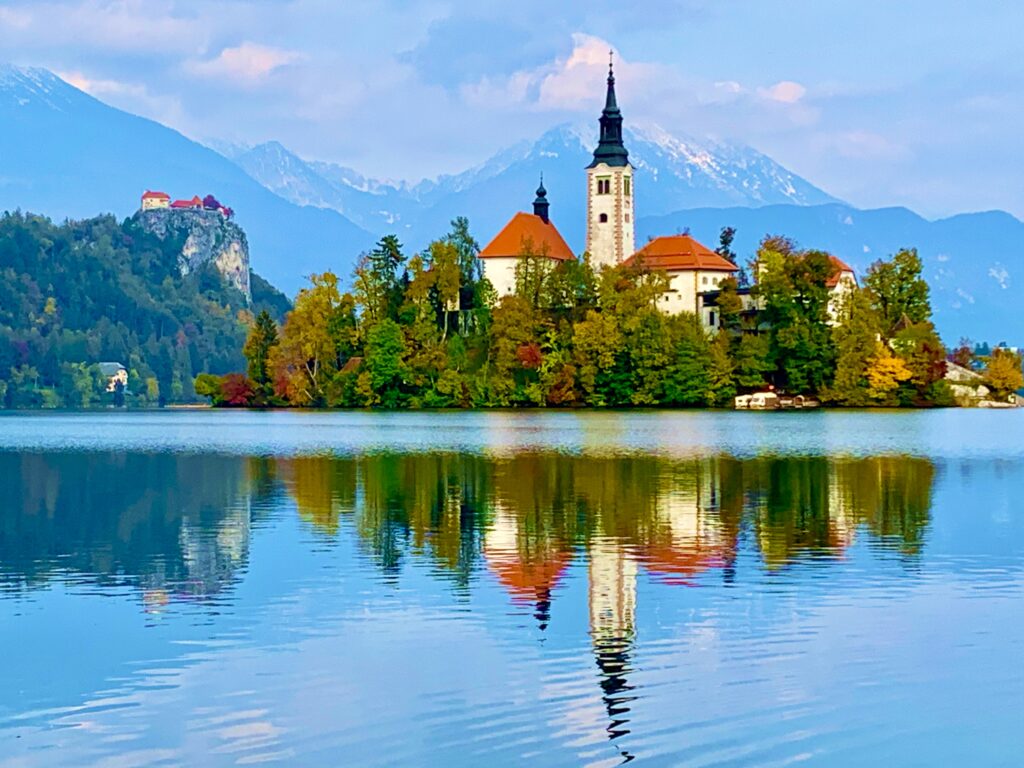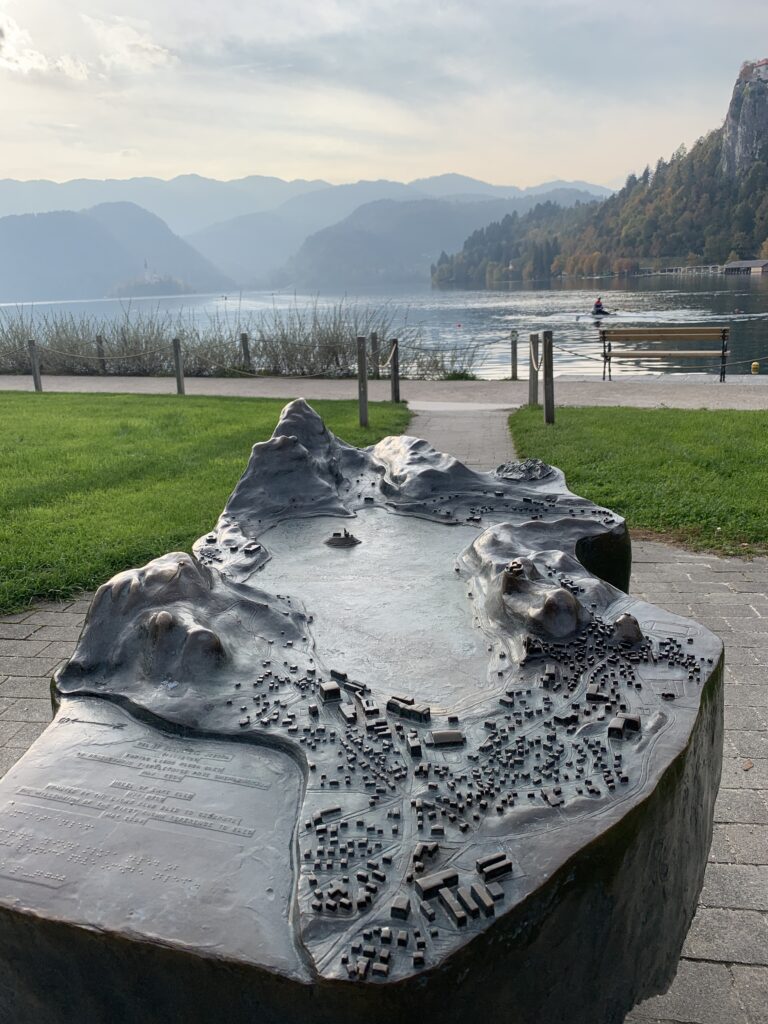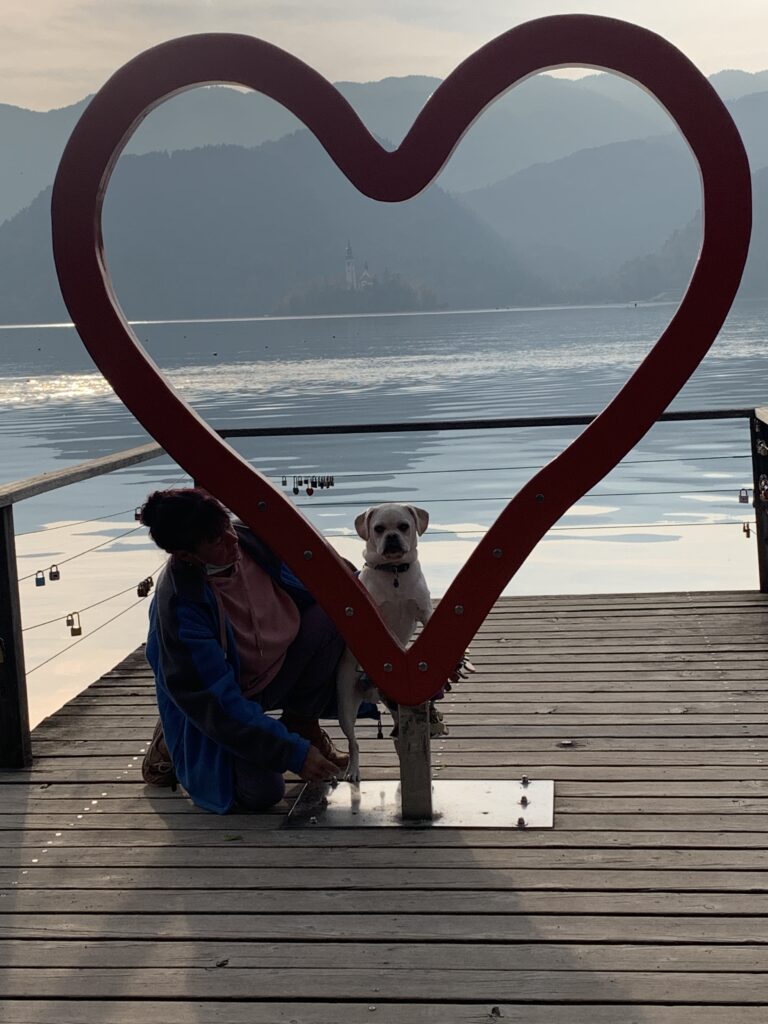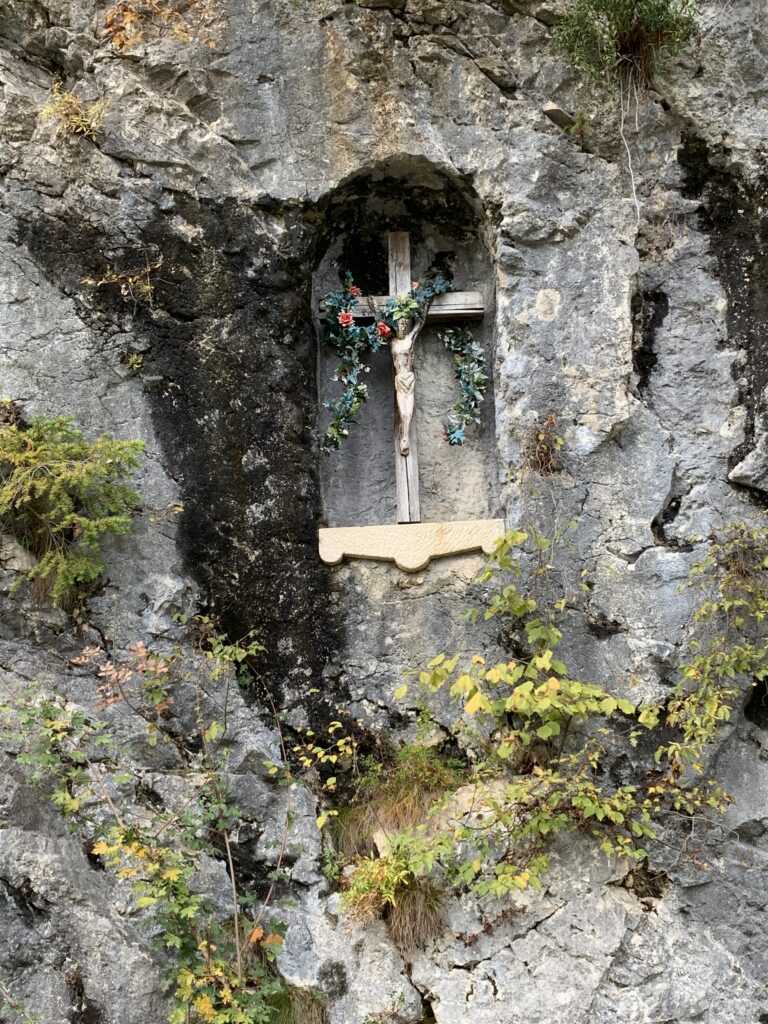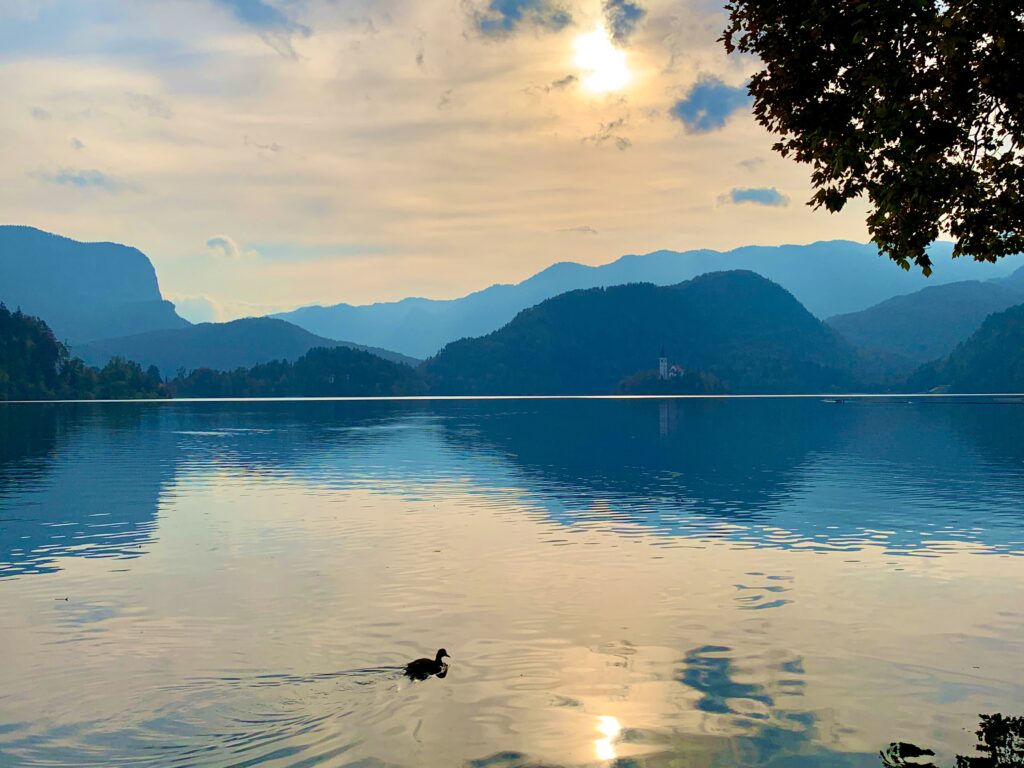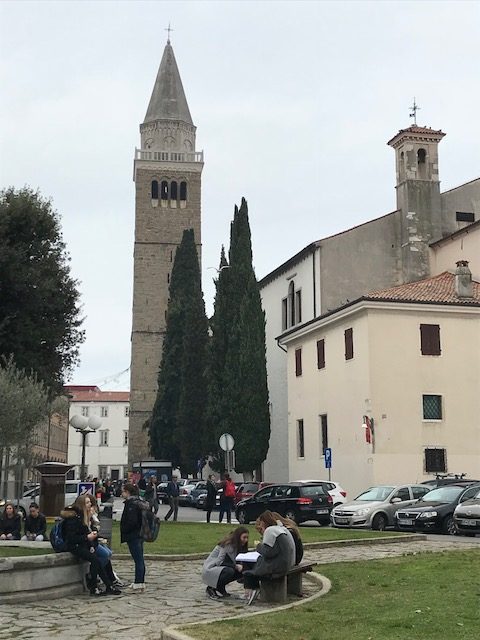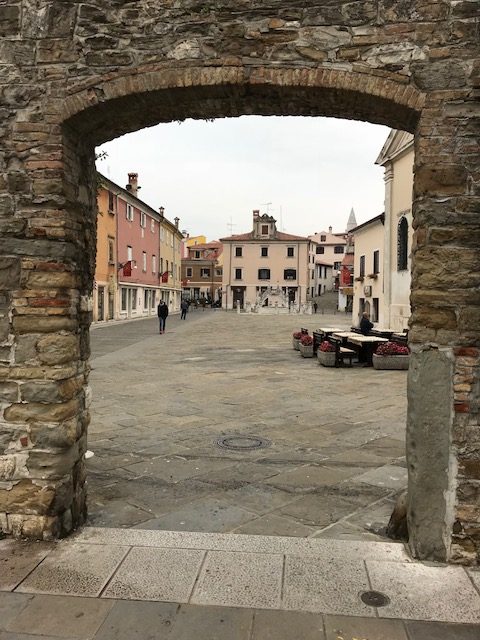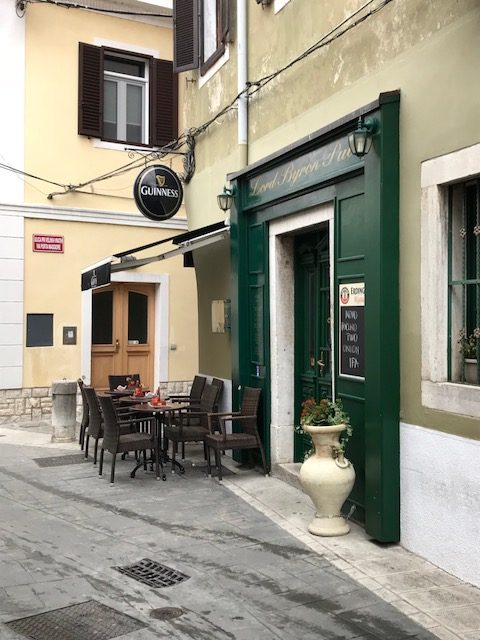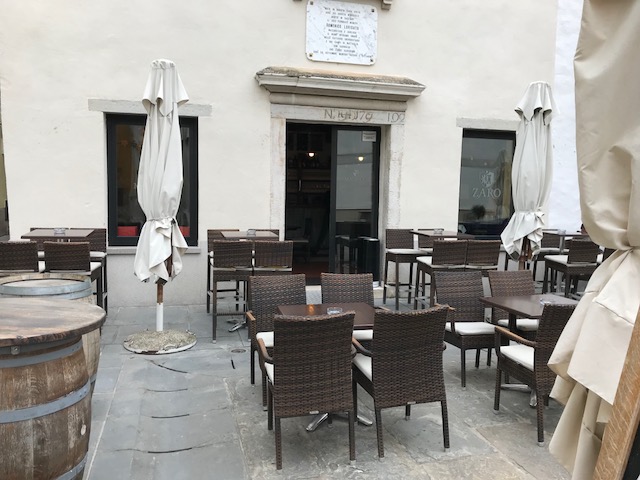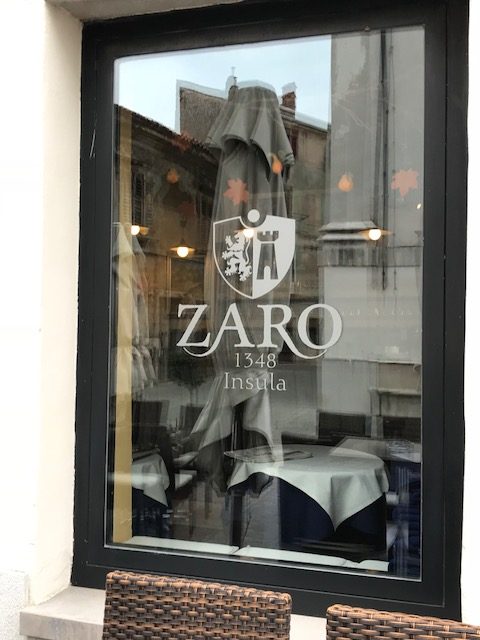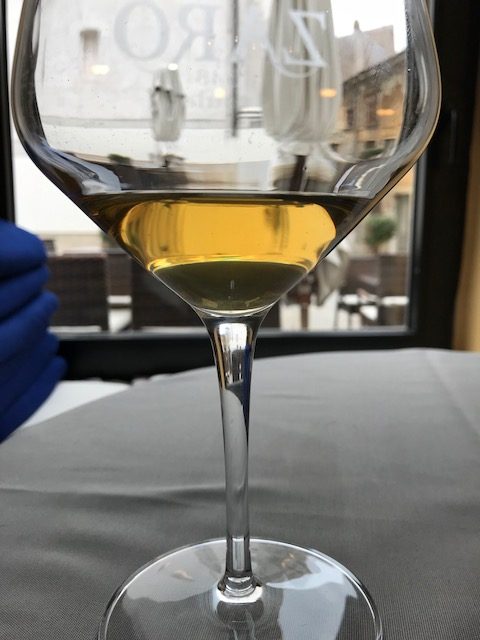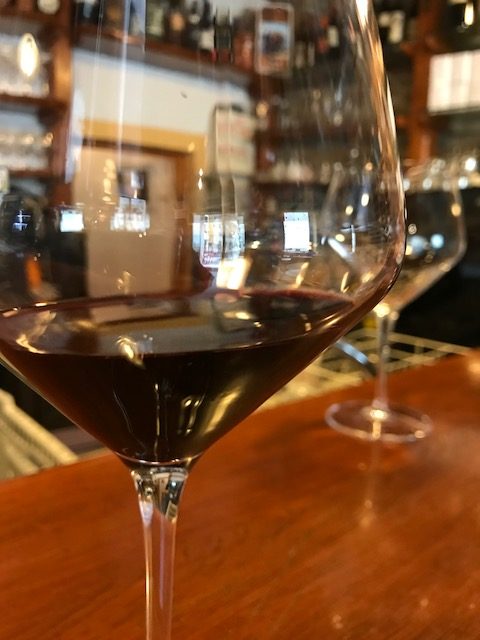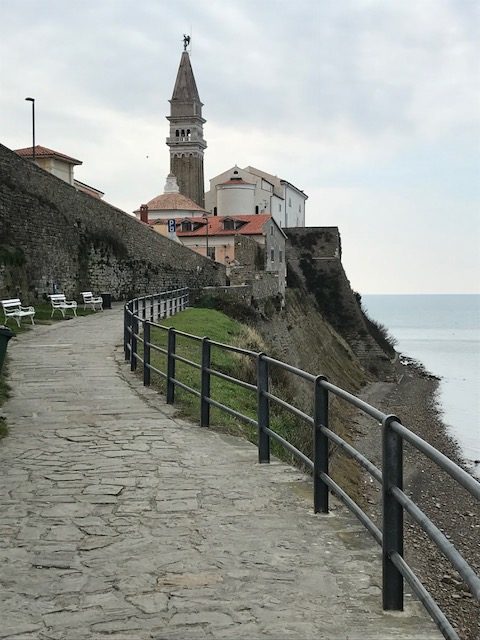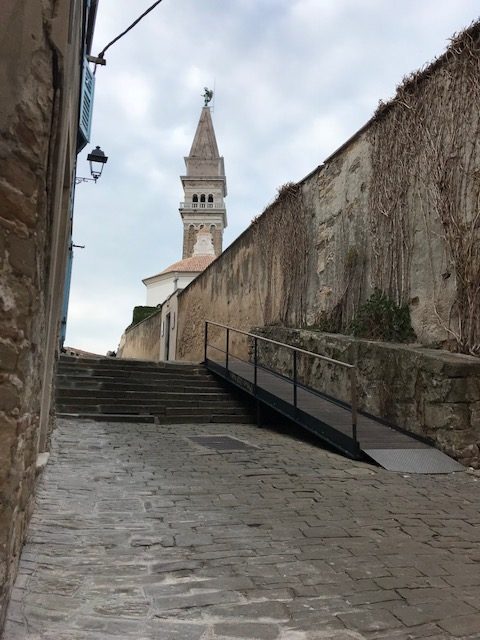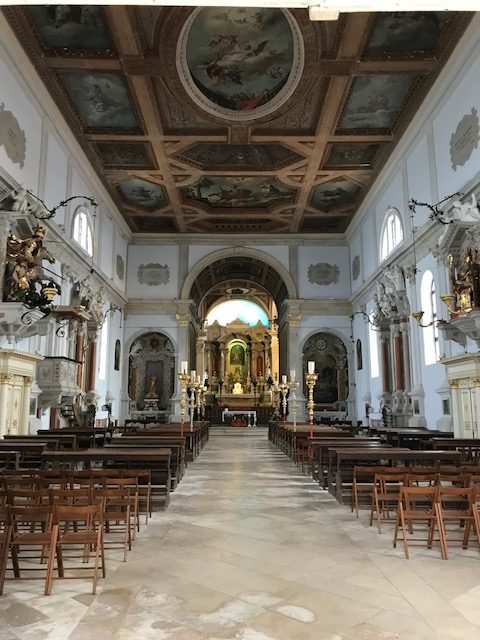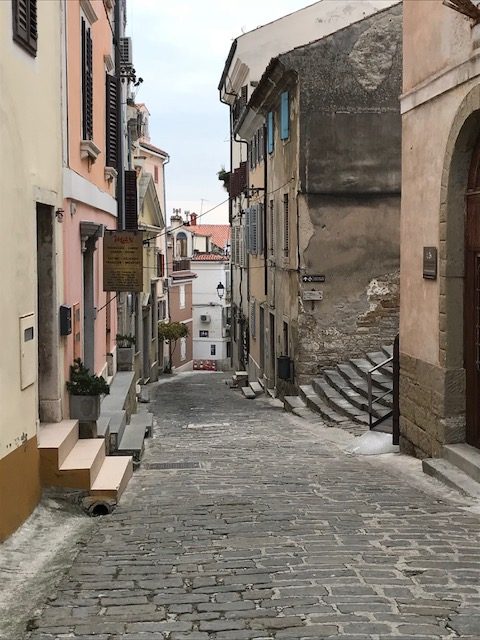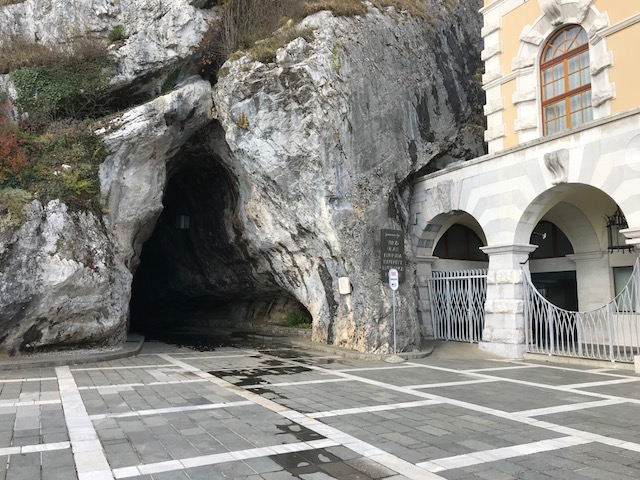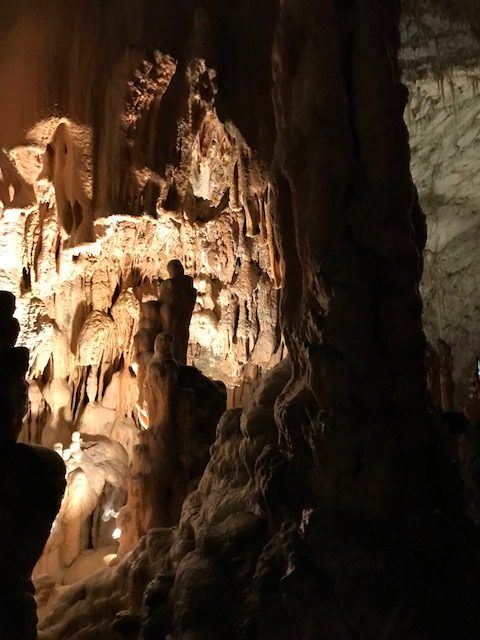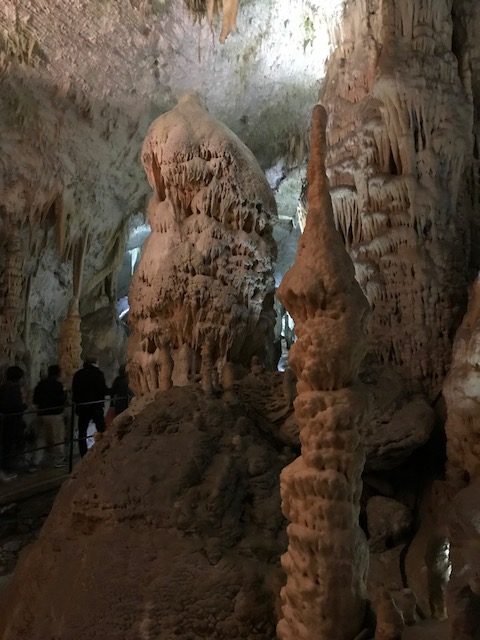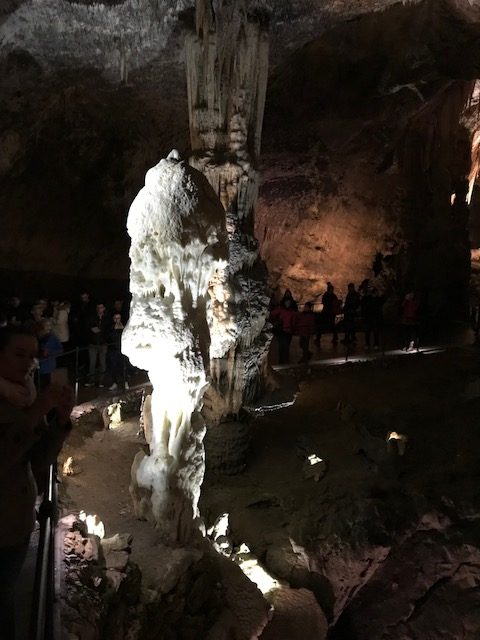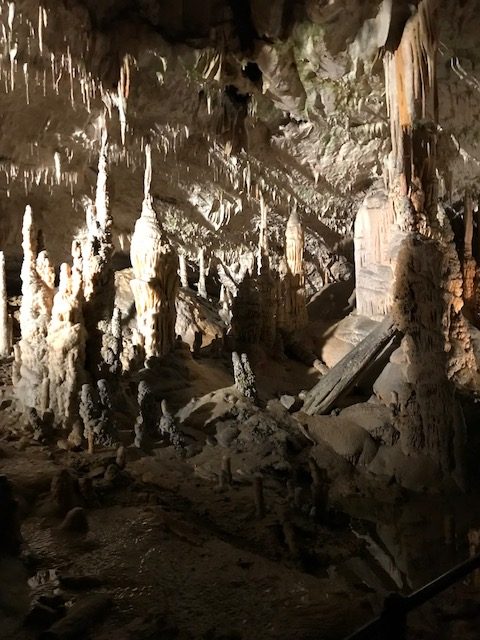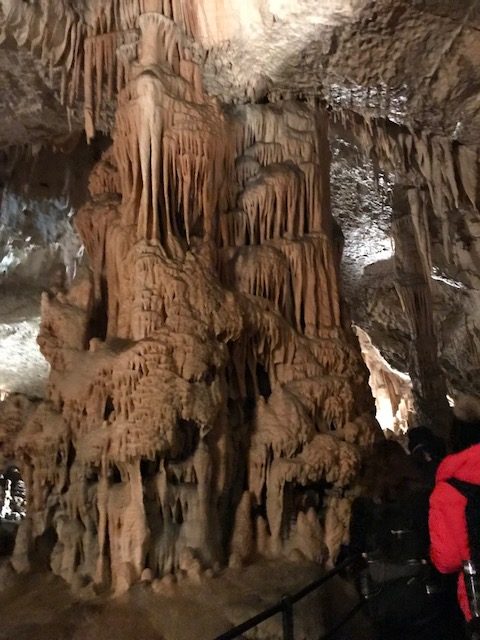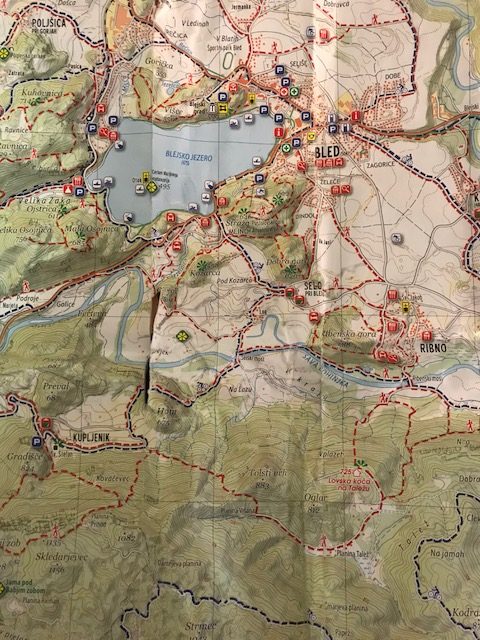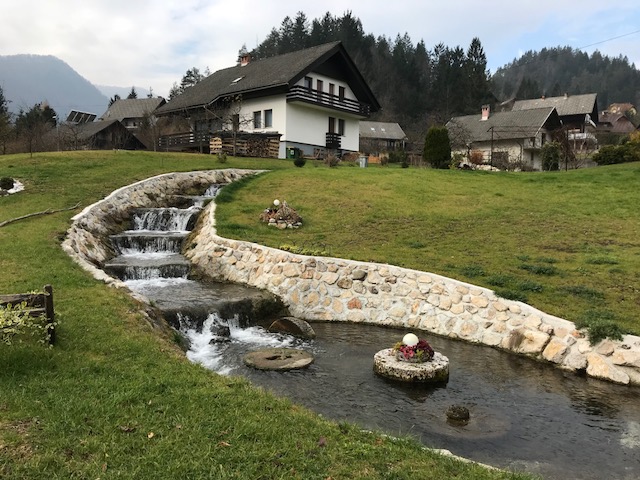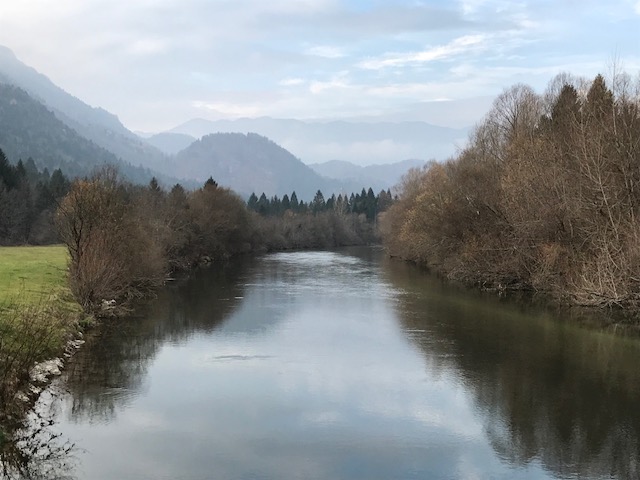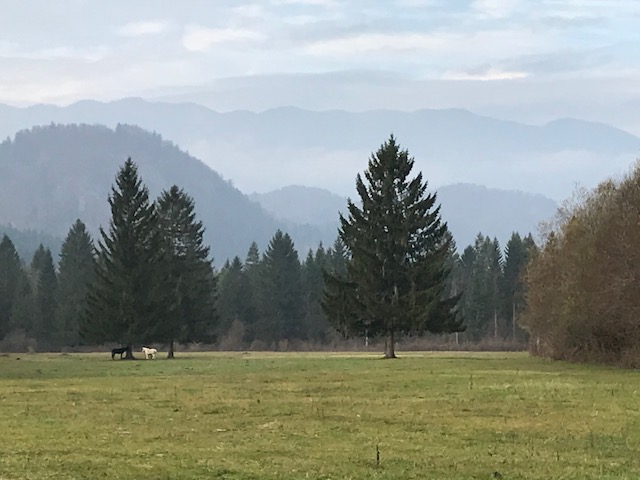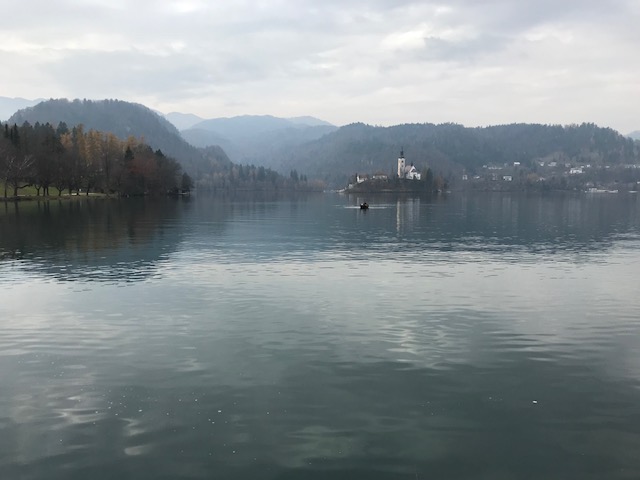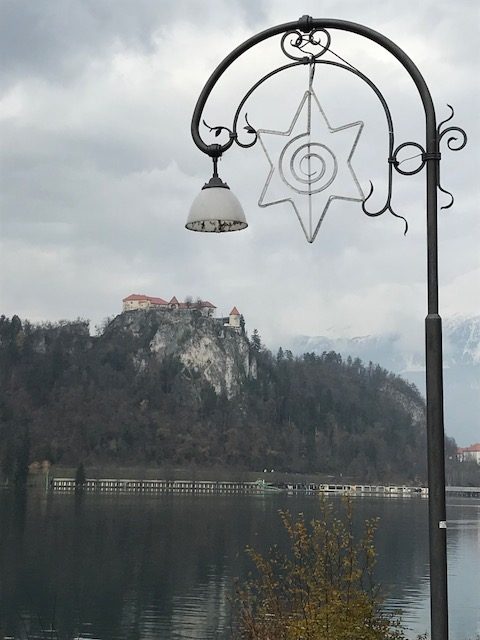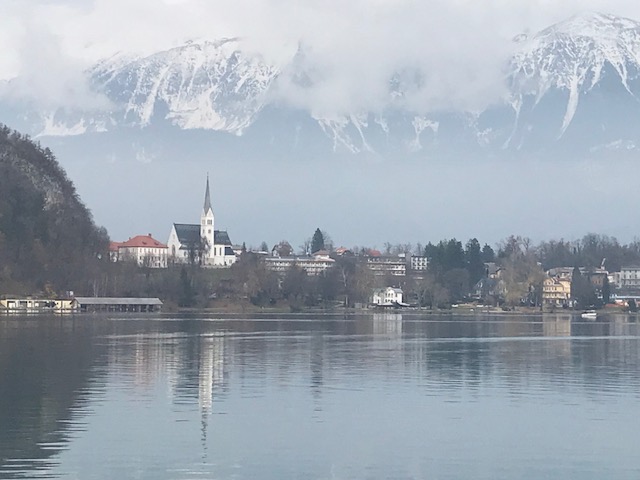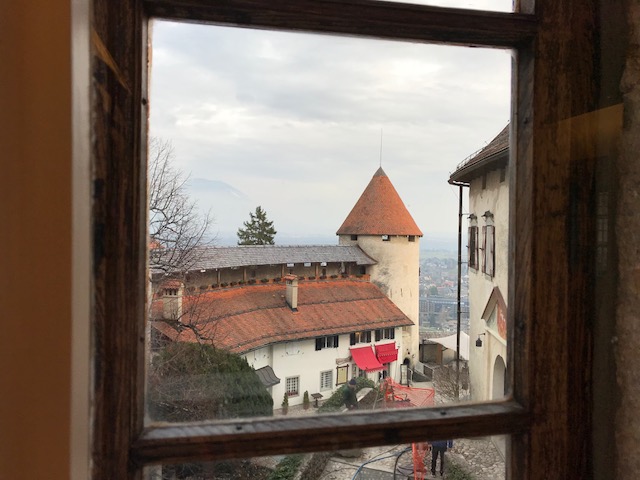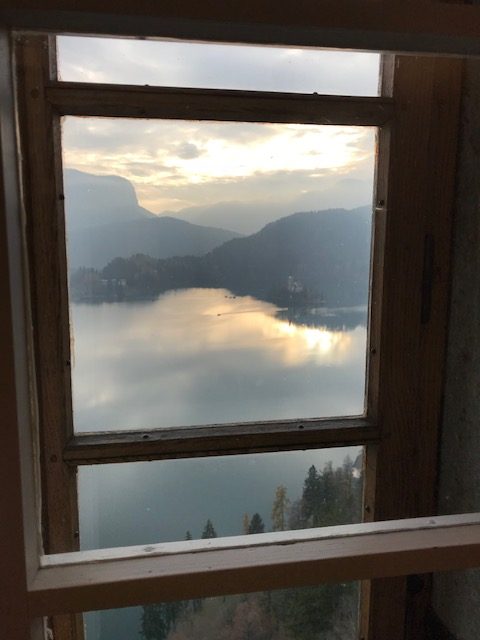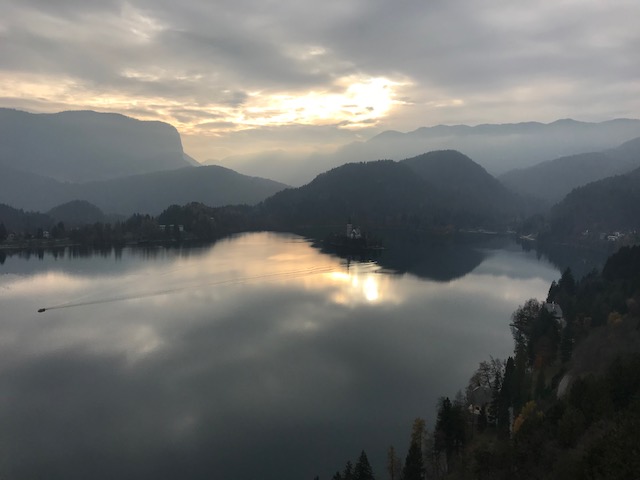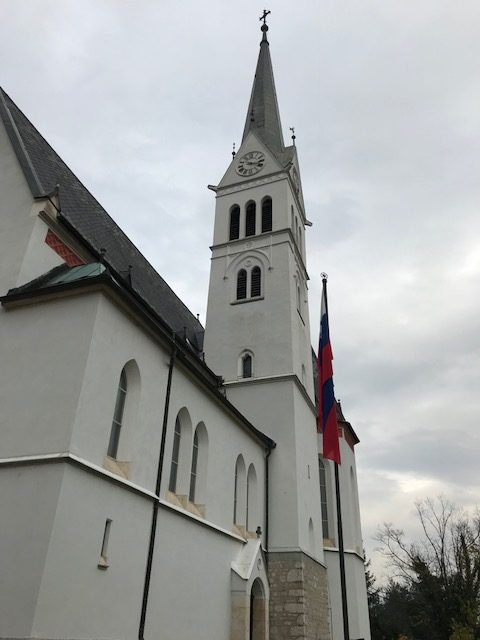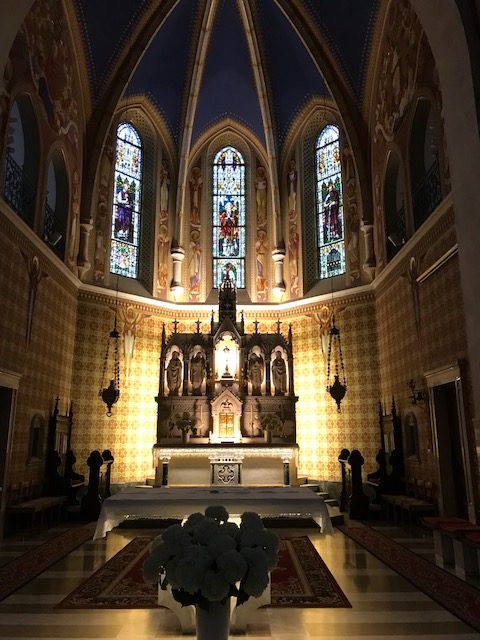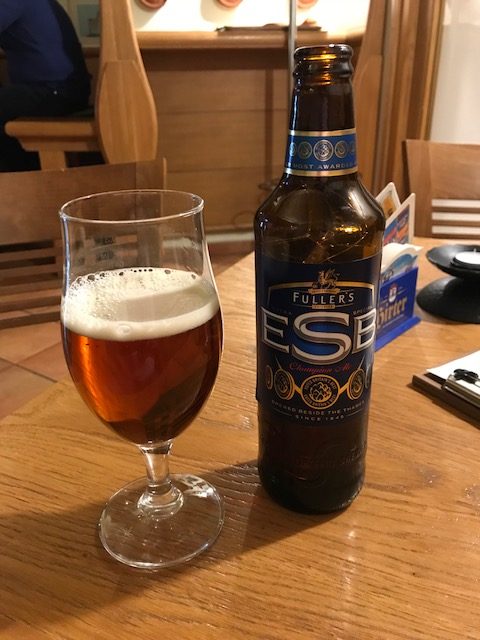While at Varpolje we took time out to visit the small town of Mozirje, just 20 minutes drive away. We chose Mozirje because the weather forecast predicted it was going to be an uncomfortably hot day for the dogs and we thought to go somewhere which wouldn’t entail too much driving and where there would be plenty of shade. The Mozirski Gaj Flower Park in Mozirje was recommended as just such a place. Neither Vanya nor I have been particularly interested in such places before but it proved an inspired choice.
The Mozirski Gaj is a real success story. Built on the site of an illegal landfill on the right bank of the River Savinja at the edge of Mozirje; the Park has been transformed, since it first opened as a tulip garden in 1978, into one of the area’s most favoured tourist attractions. Despite the Savinja bursting it’s banks in 1981 and totally destroying all of the tulips, the Park now features some seven hectares of well thought out beautiful themed gardens and an open air ethnographic museum; not to mention 30 different varieties of tulips which now total 150,000 flowers.
Some of the gardens are amazing, with my favourites being a small Japanese Garden, a colourful rock garden and an extensive aromatic herb garden. Dotted in and around the gardens are various ethnographic features: a mountain lodge, a water mill with adjoining forge, a Venetian sawmill (i.e. a water powered sawmill), a traditional granary and a large apiary (with more than 800 bee famiies) all of which complement the gardens wonderfully. But it doesn’t end there. There’s a tall wooden observation tower plus; the biggest wind chimes in Europe and; another of my favourites, an Enchanted Garden complete with a range of fairy-tale houses. These houses proved a dream for both Beanie and Vanya. There’s even a small chapel (the Saint Valentine’s Chapel) which is used to hold local wedding services.
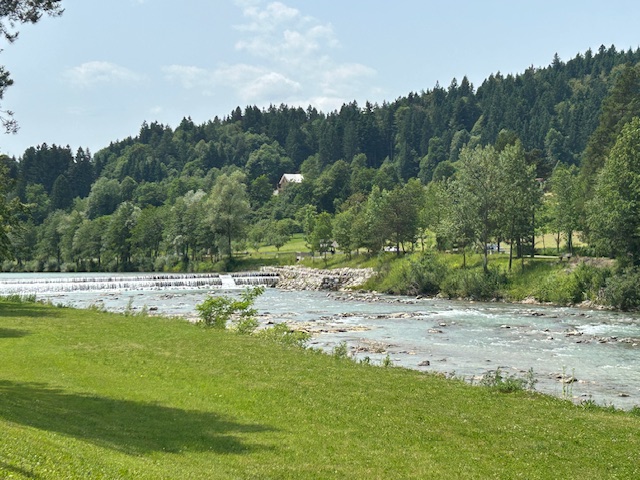



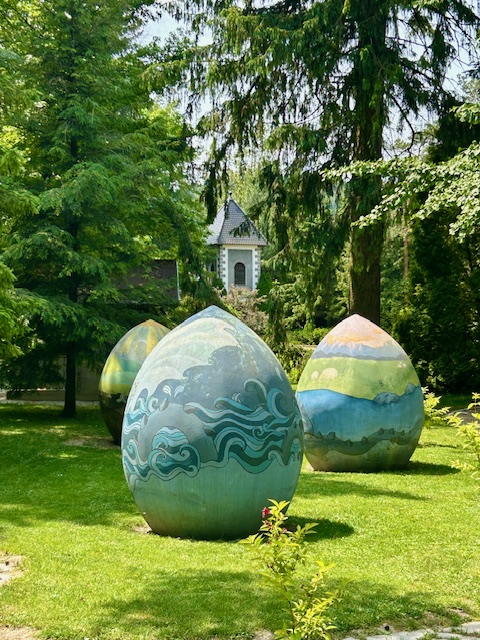


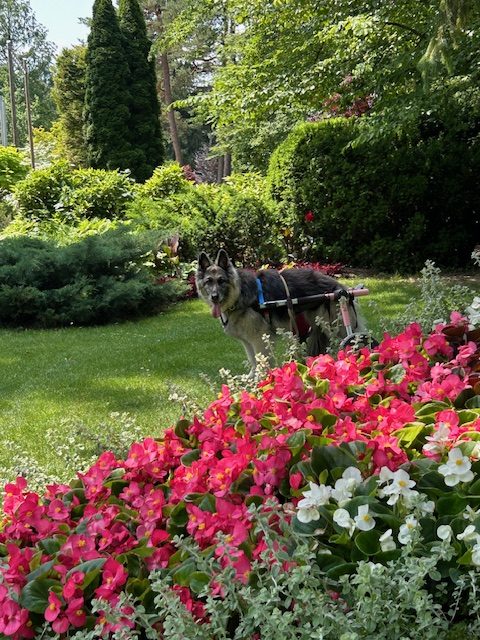
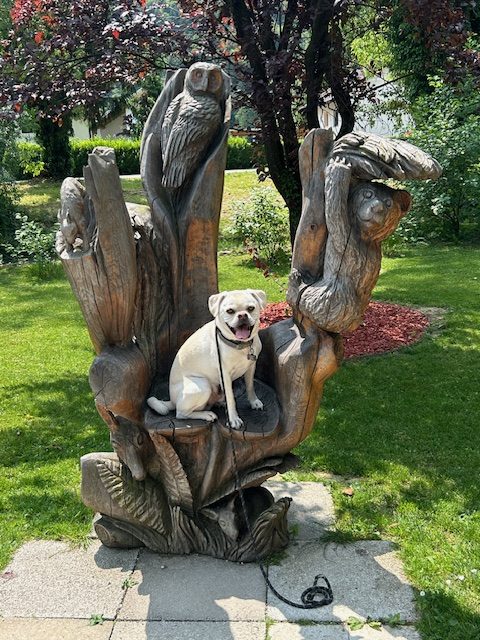
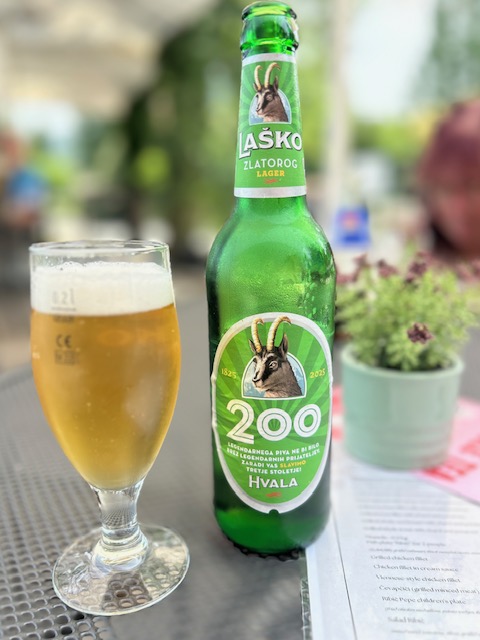


We spent a good 3 hours wandering the Park and then settled down for a beer and a glass of wine outside one of the two cafe bars. The Mozirski Gaj proved a surprising and thoroughly enjoyable outing and one I would recommend.
And Mozirje Town? Too small and too quiet for me.
